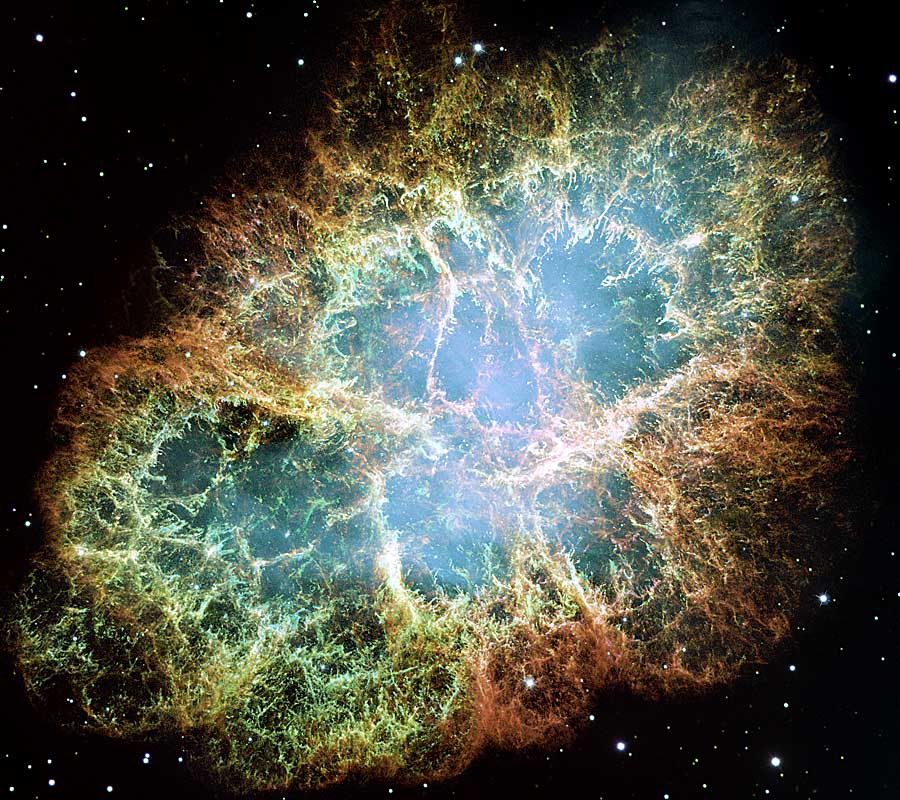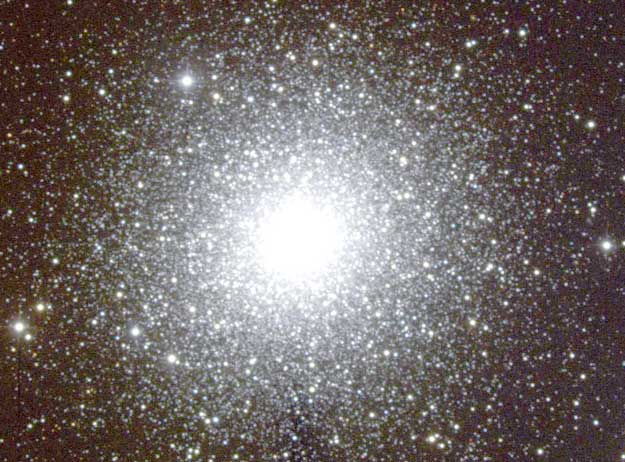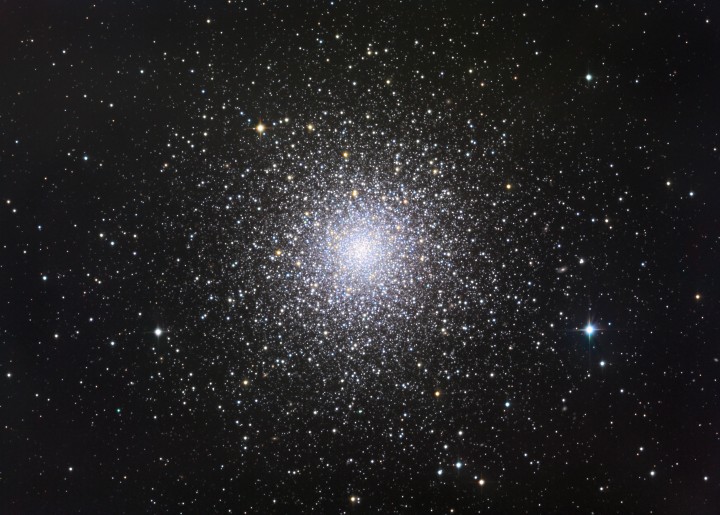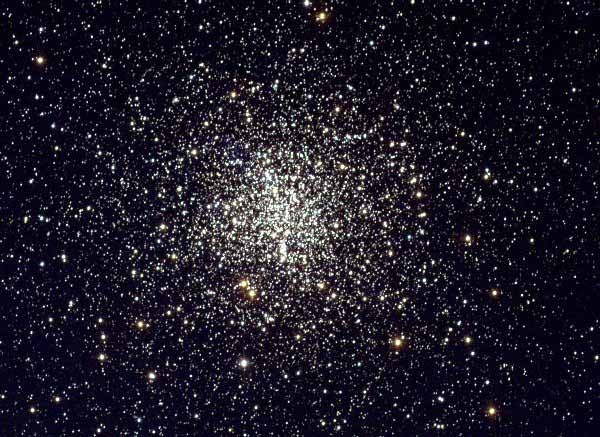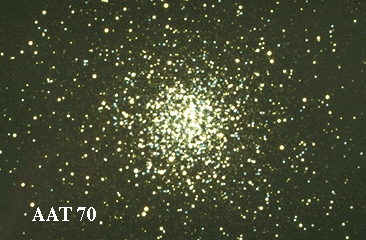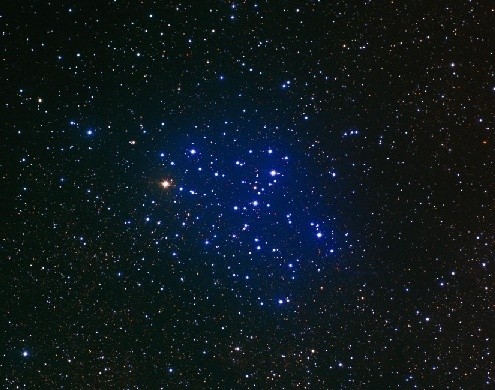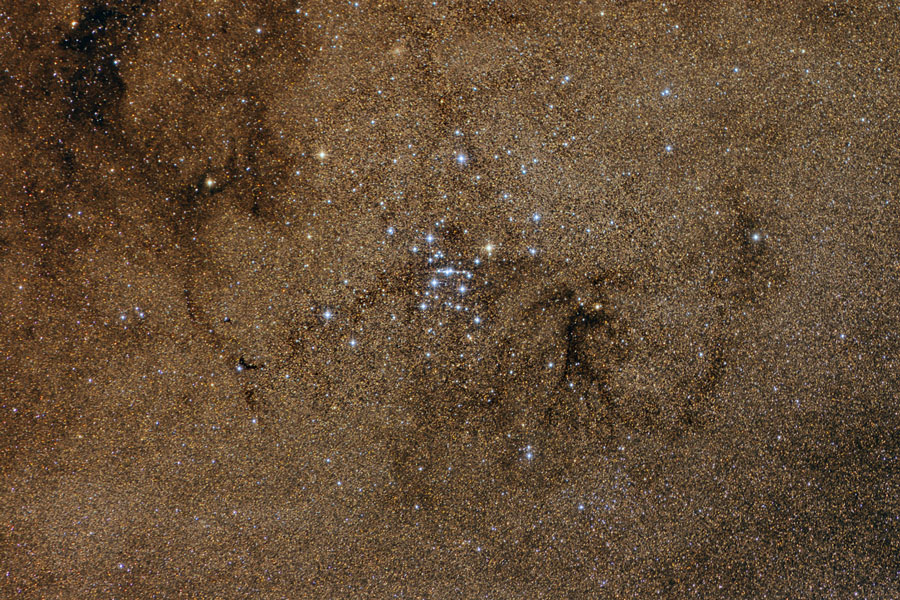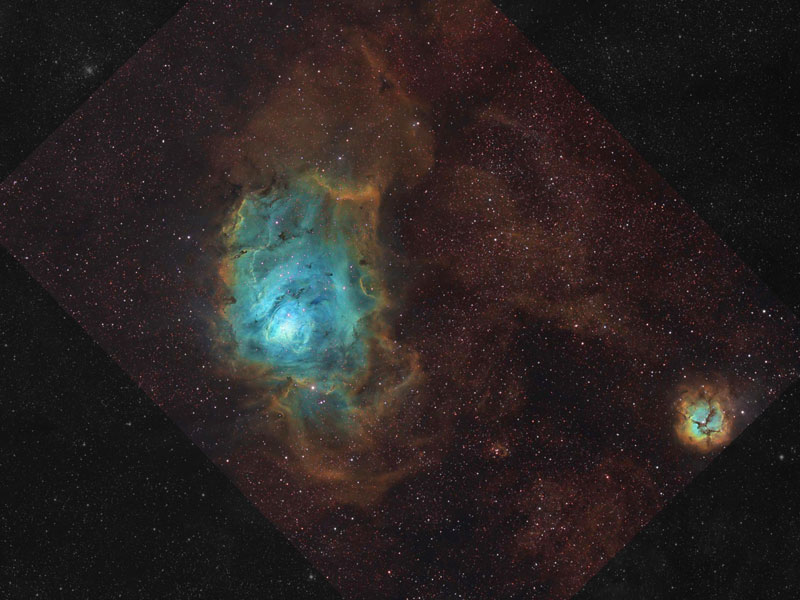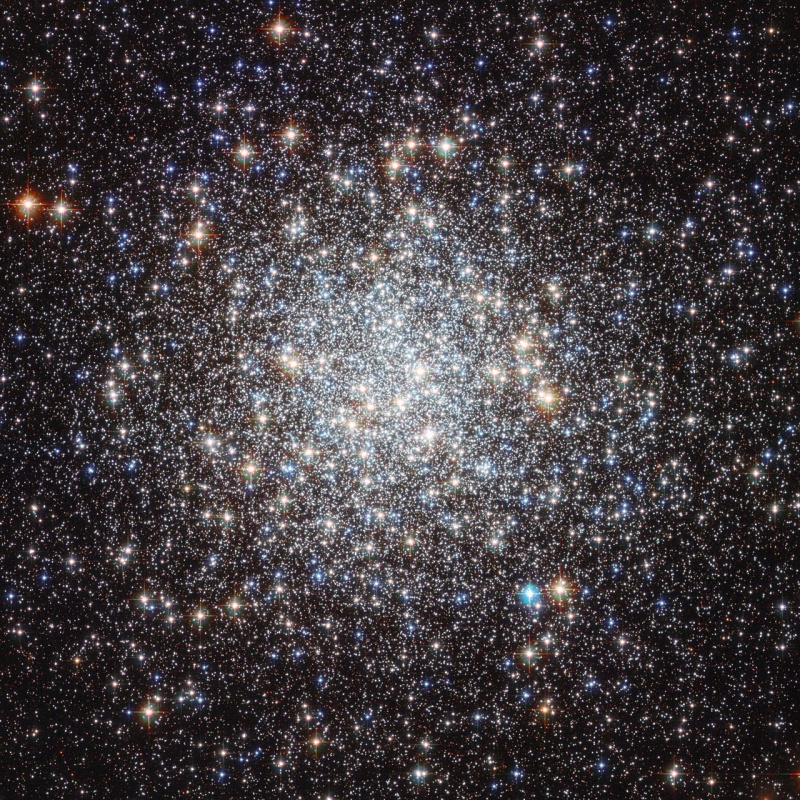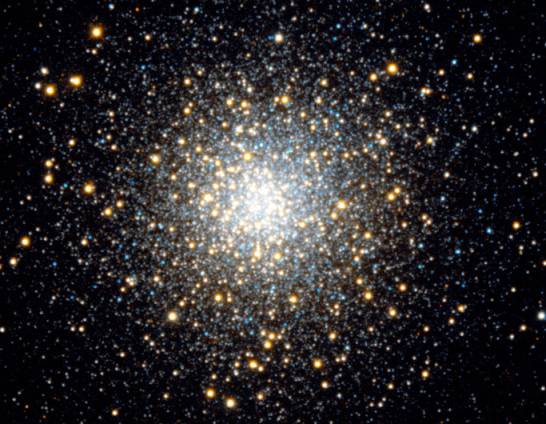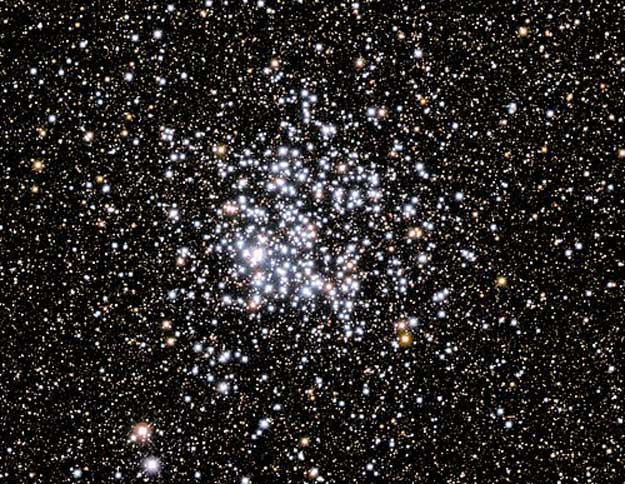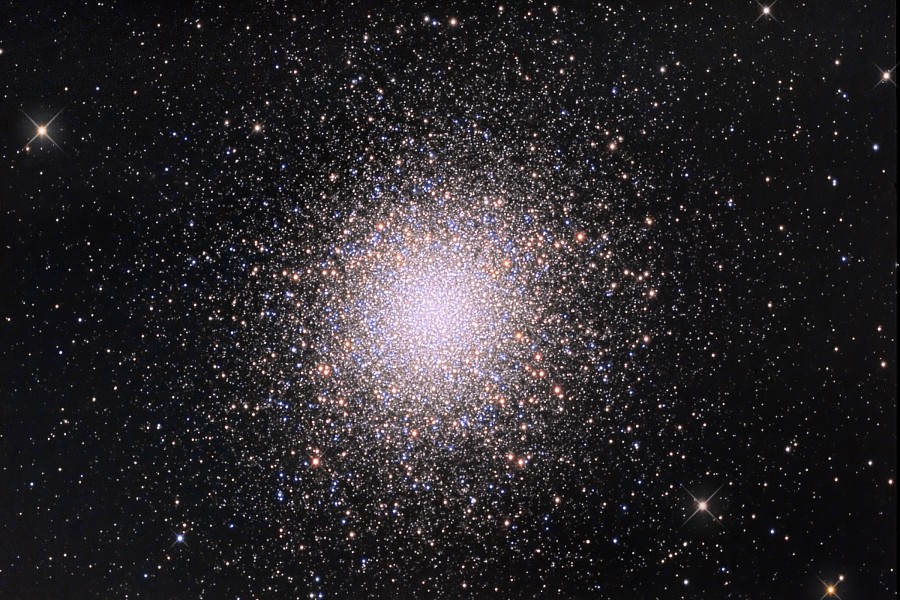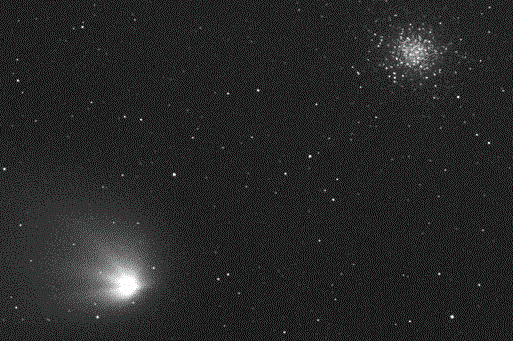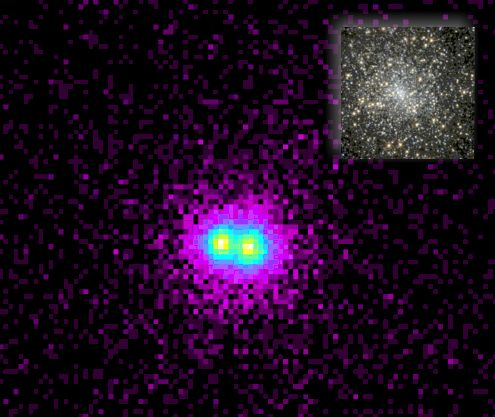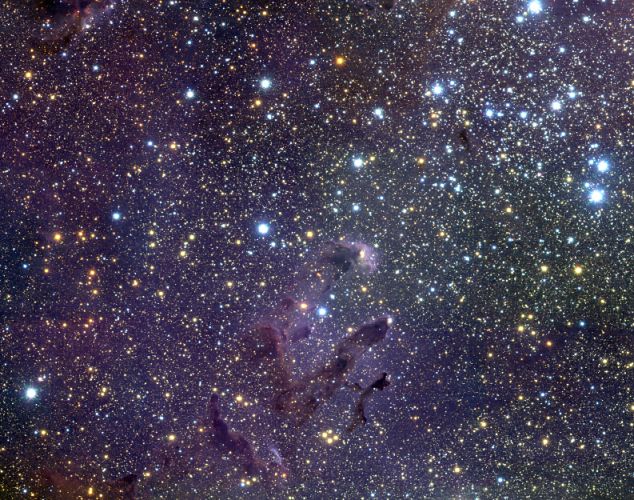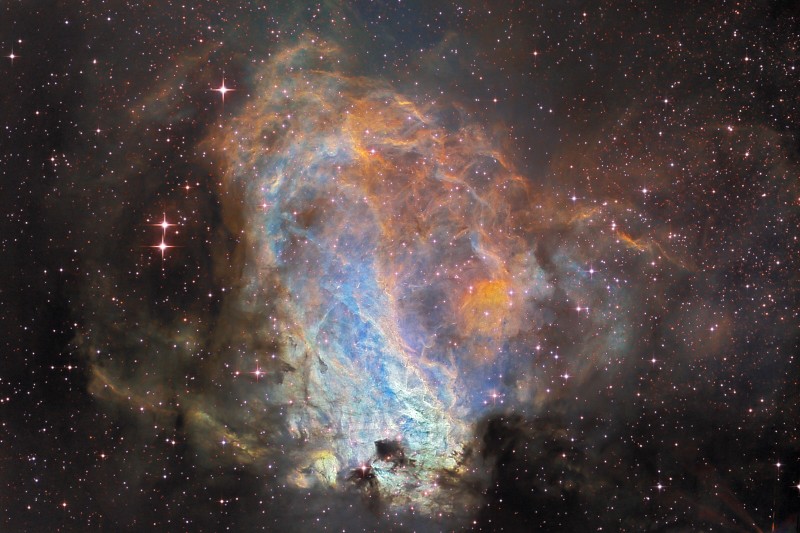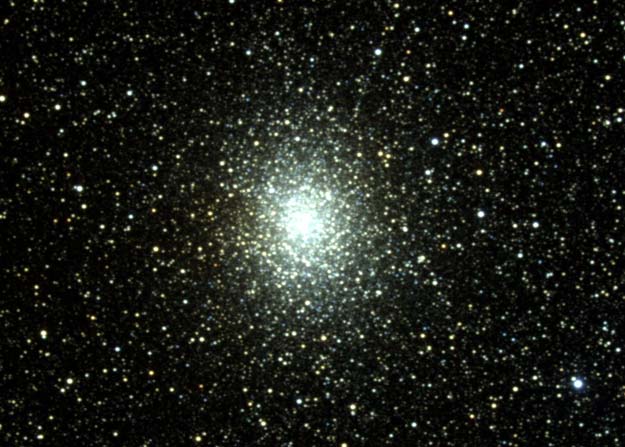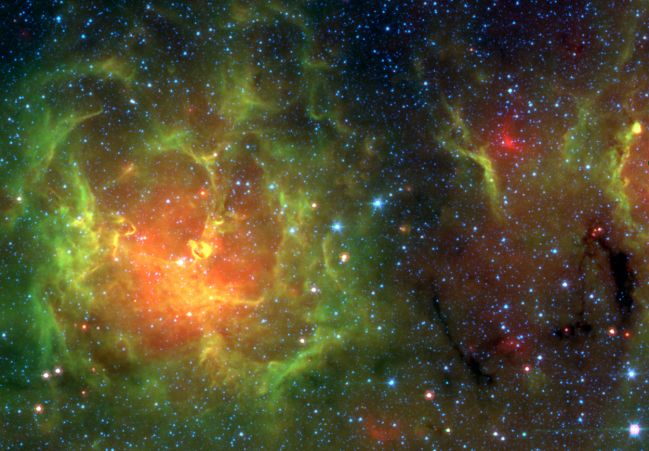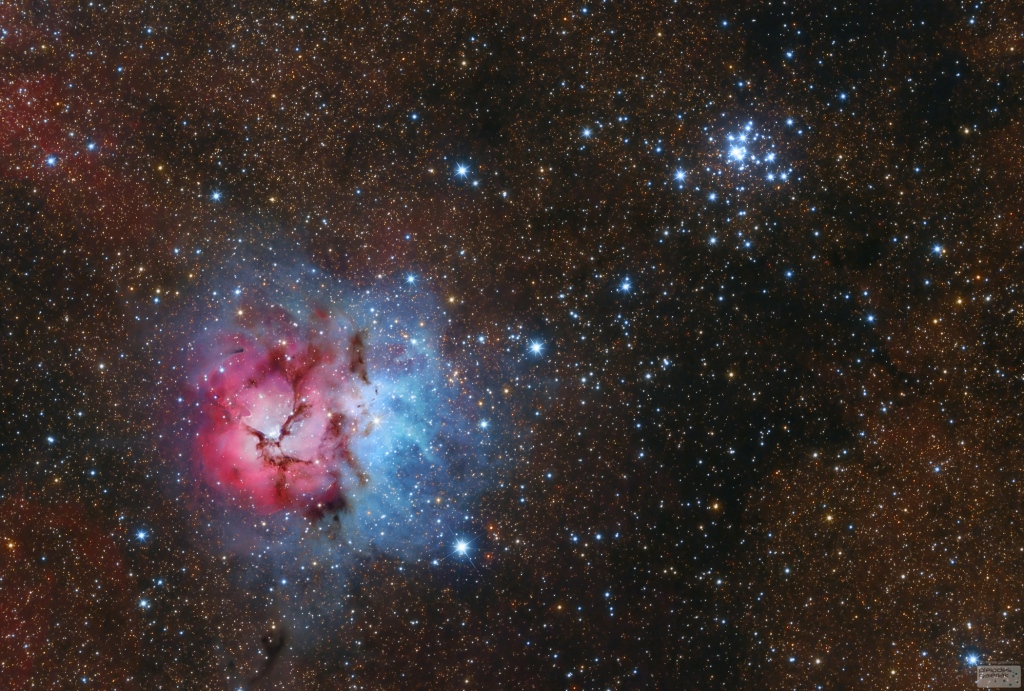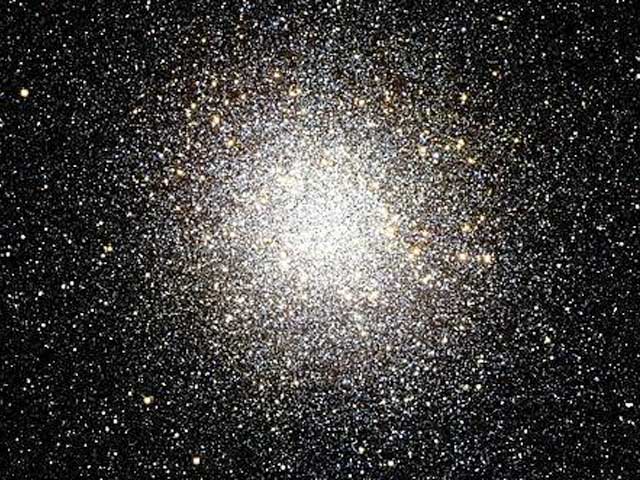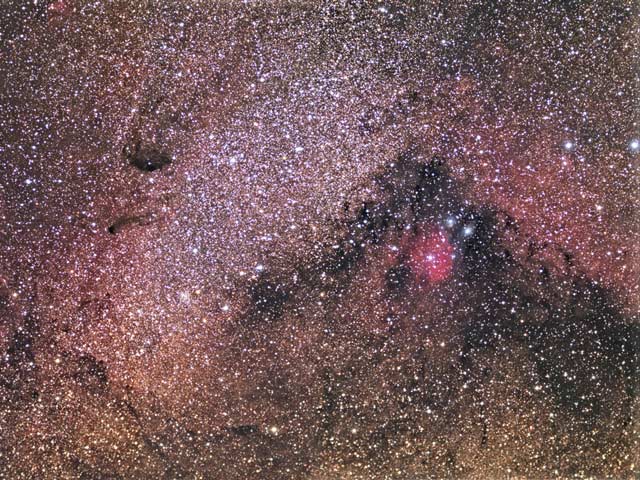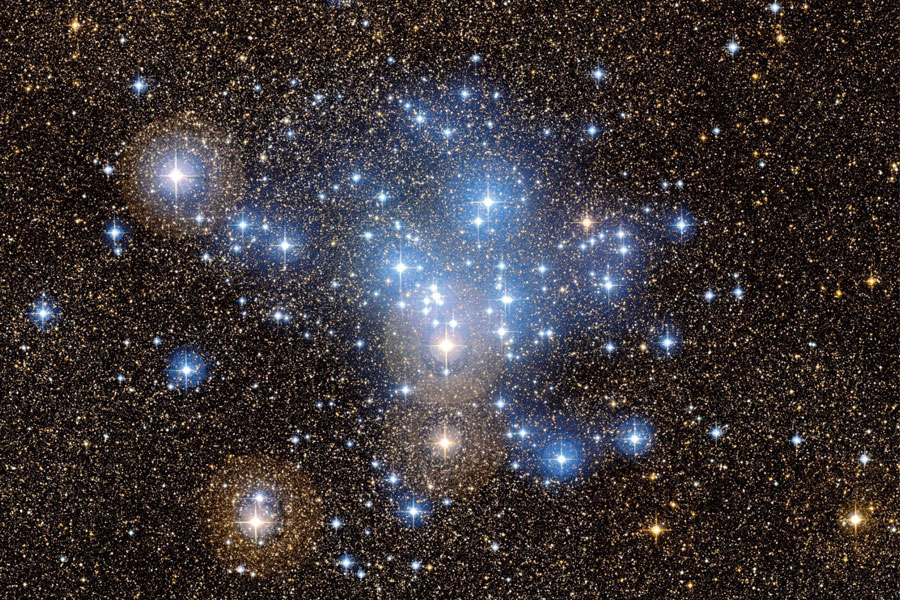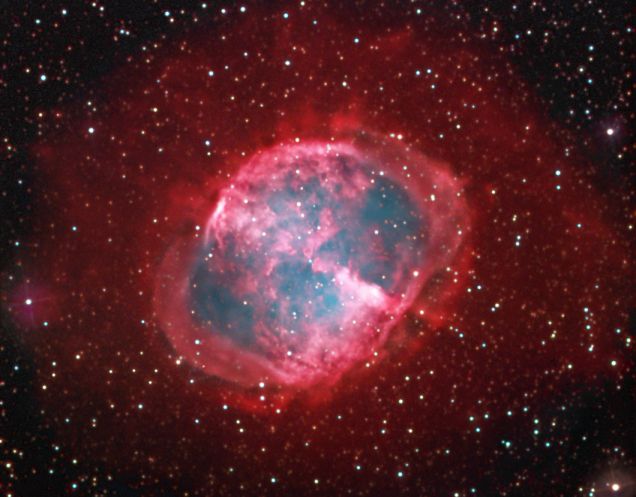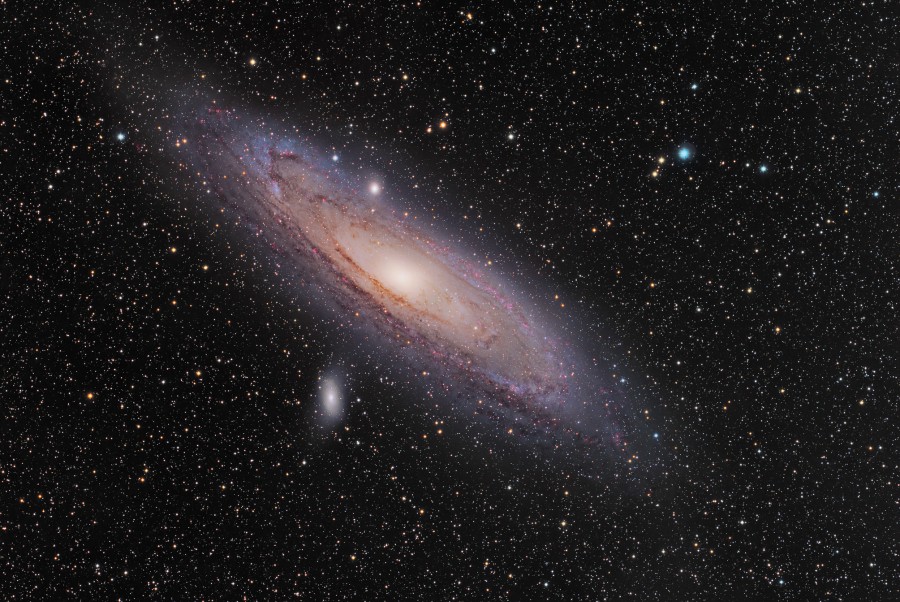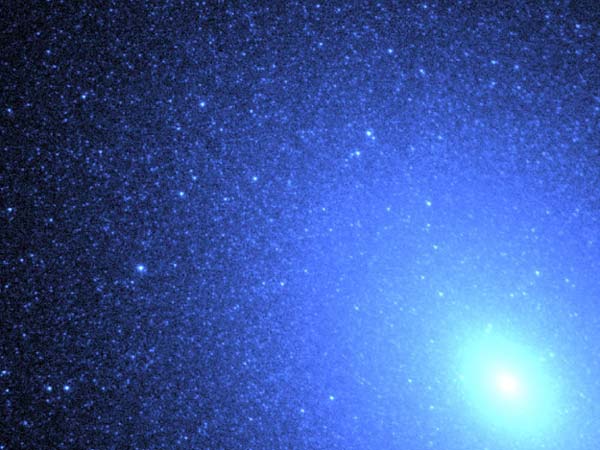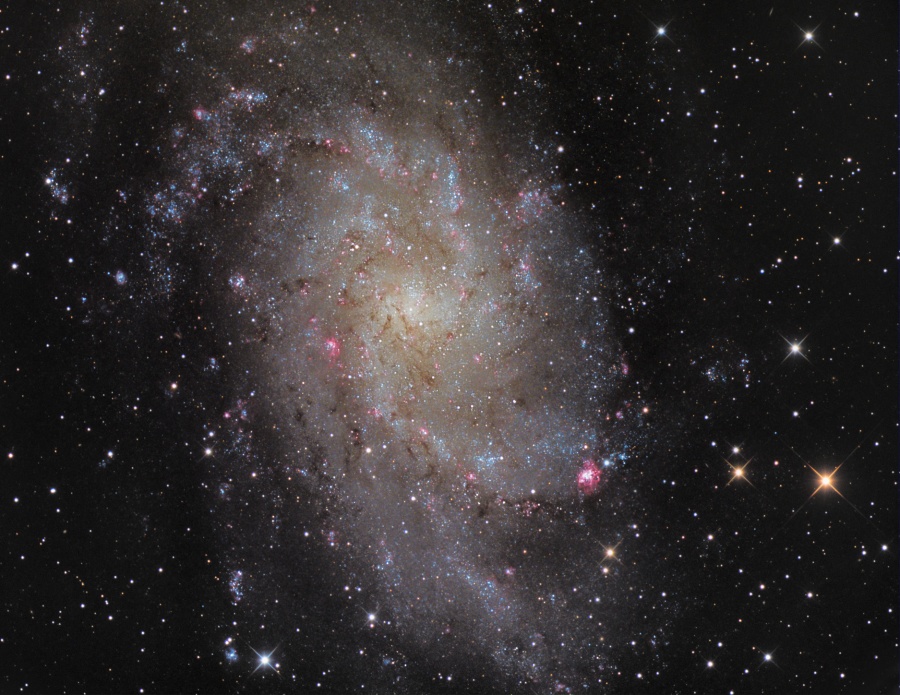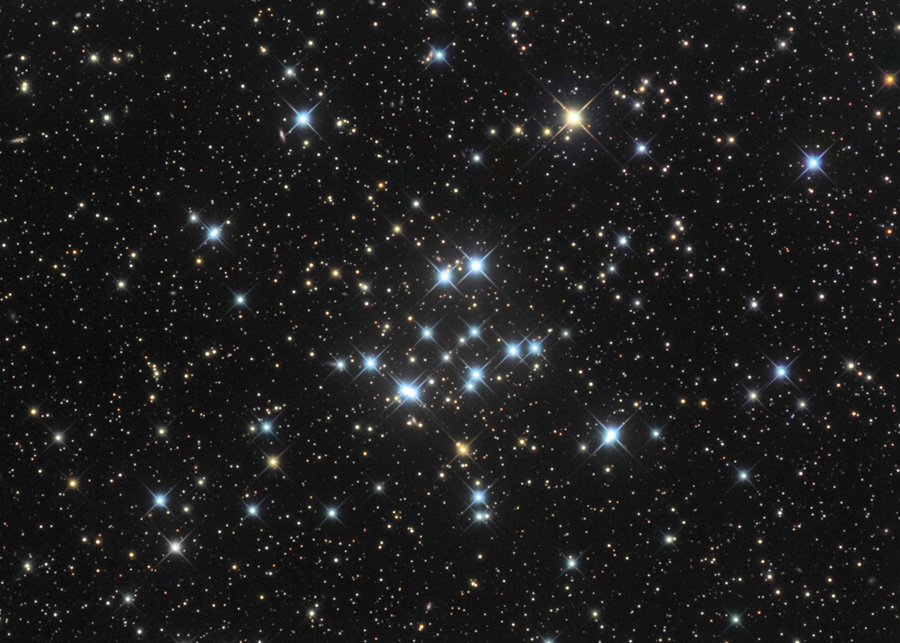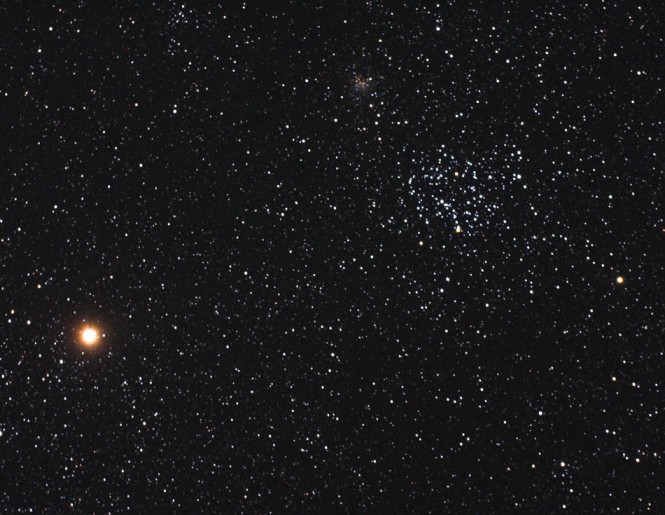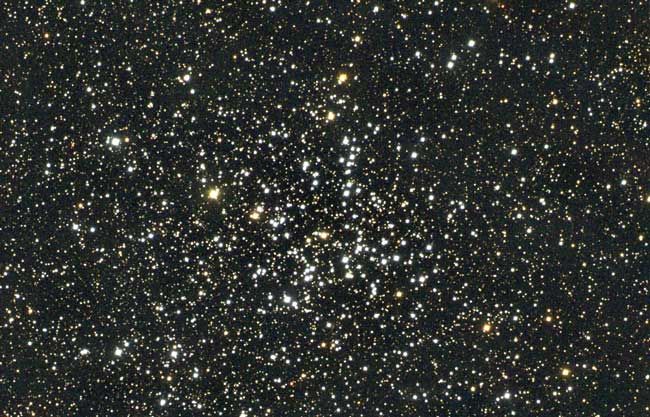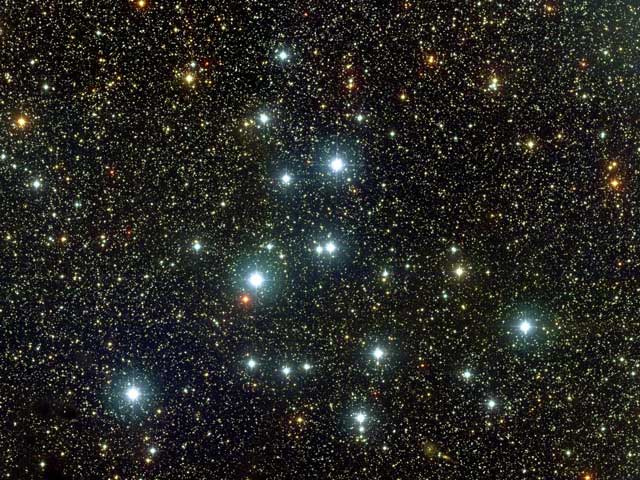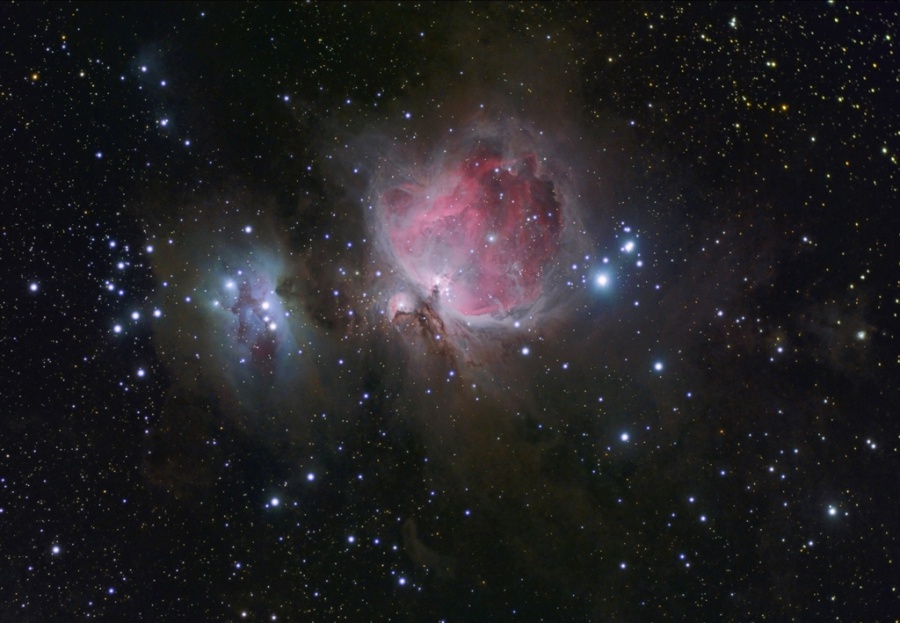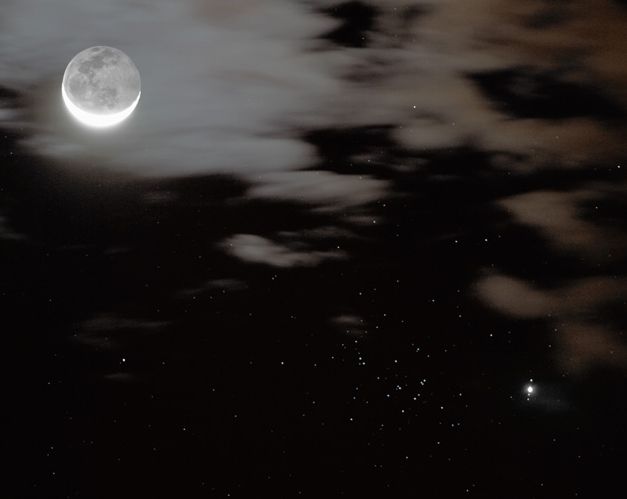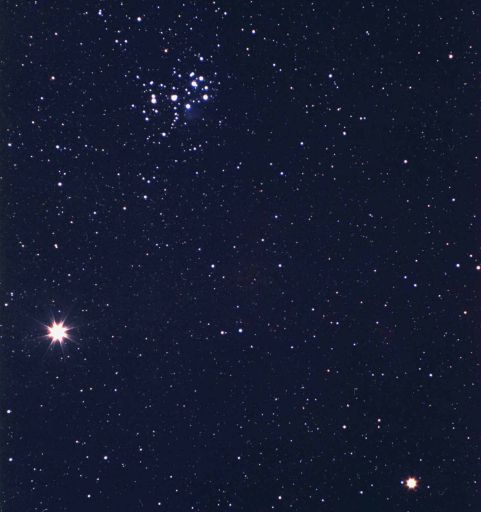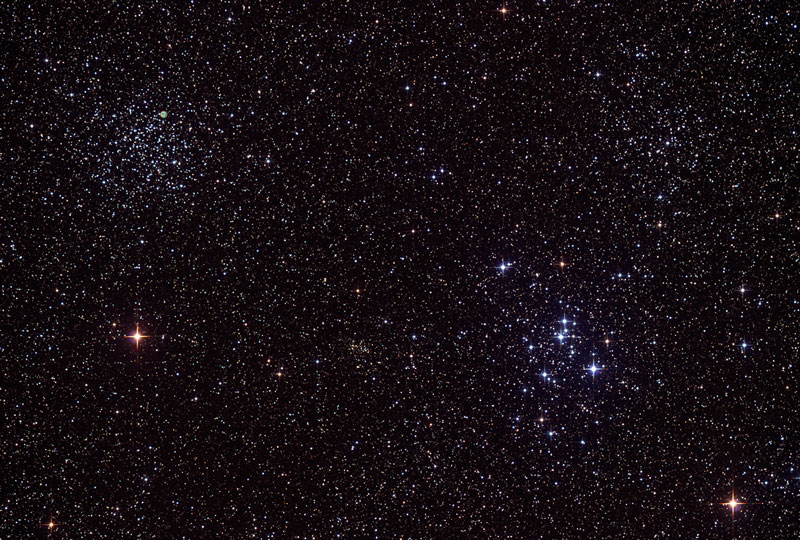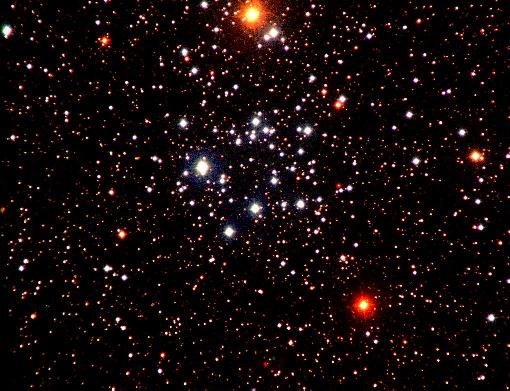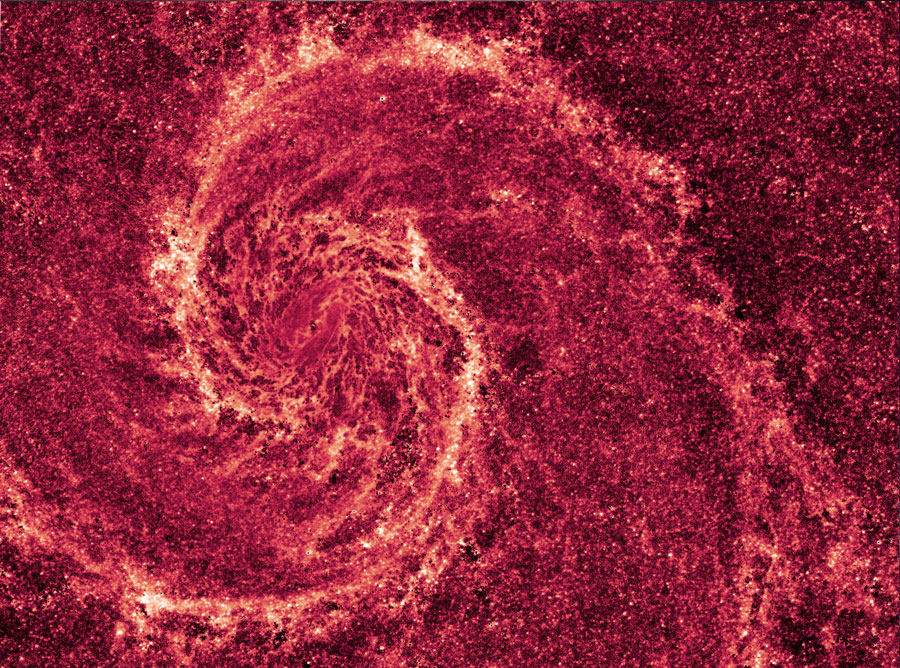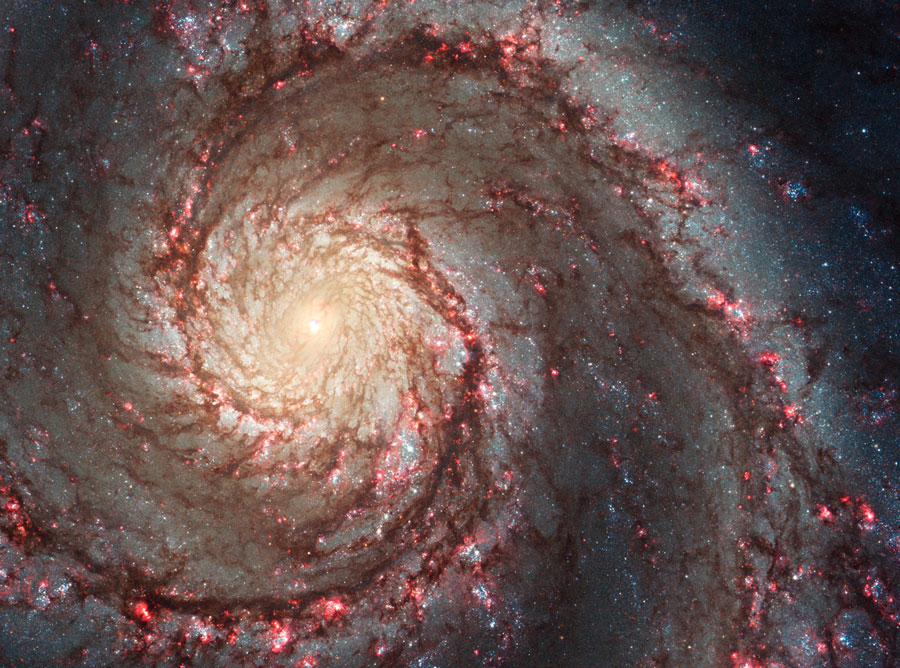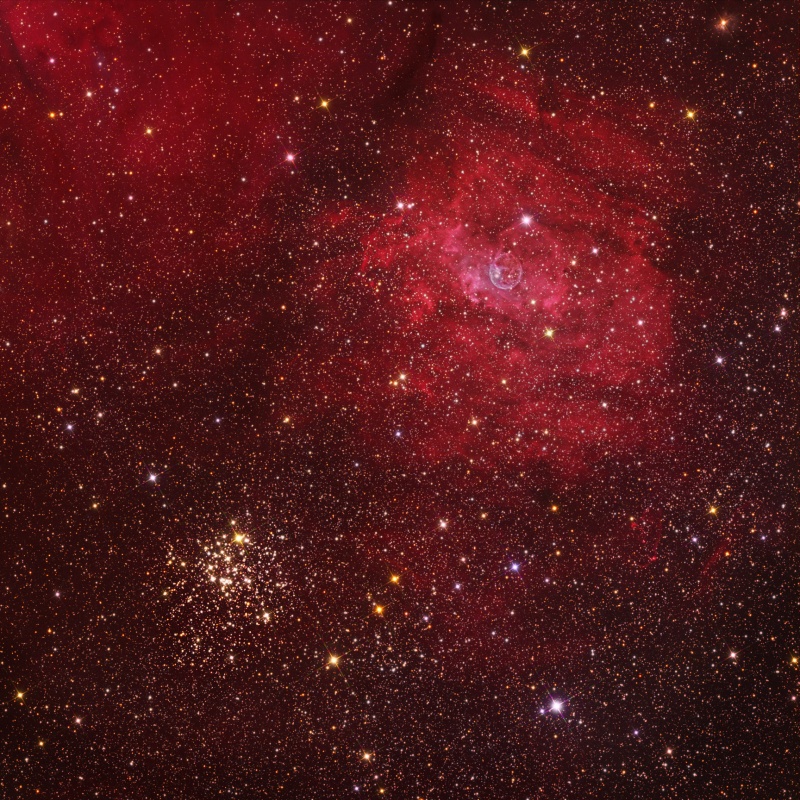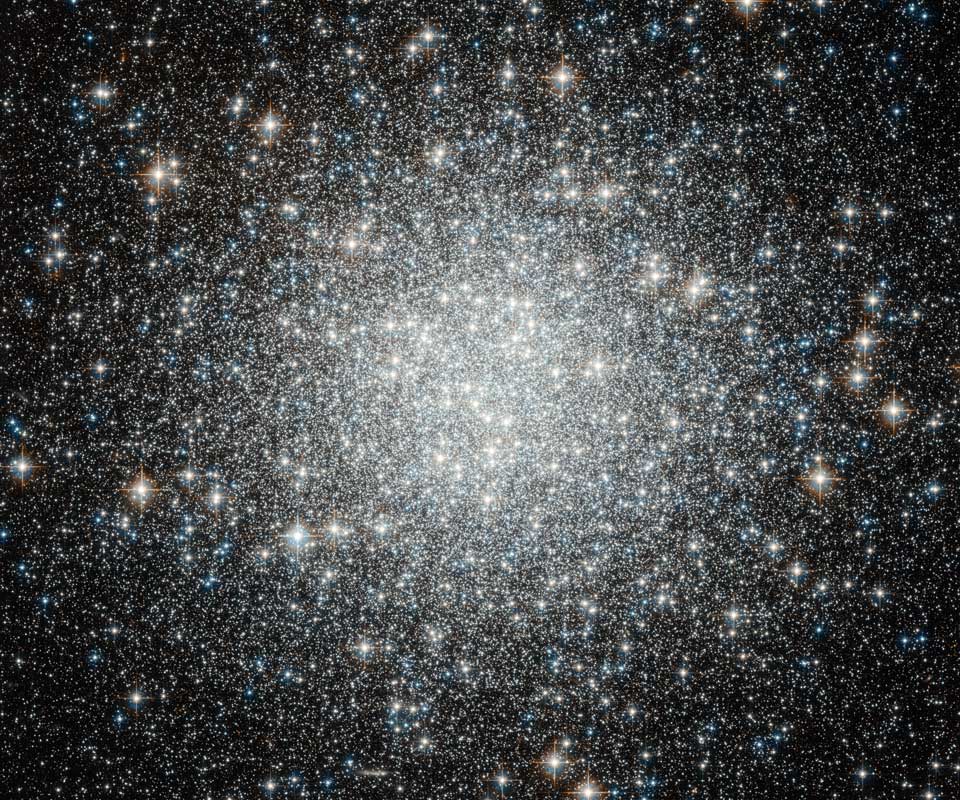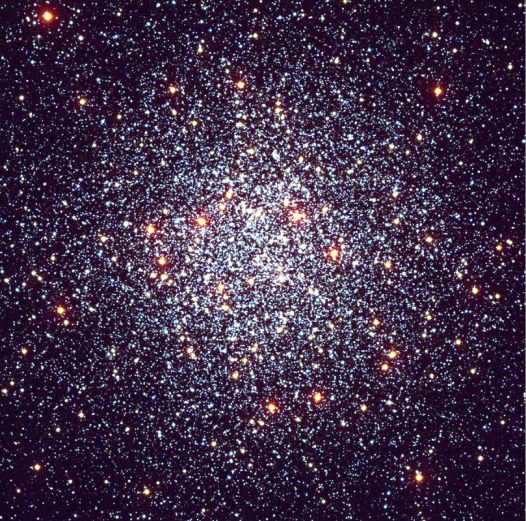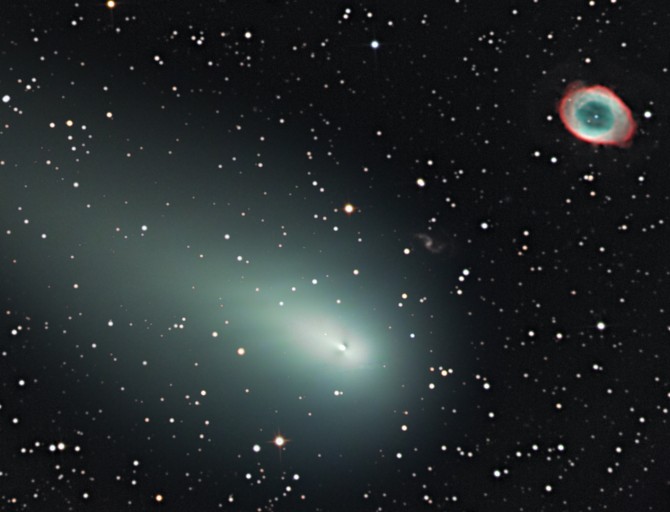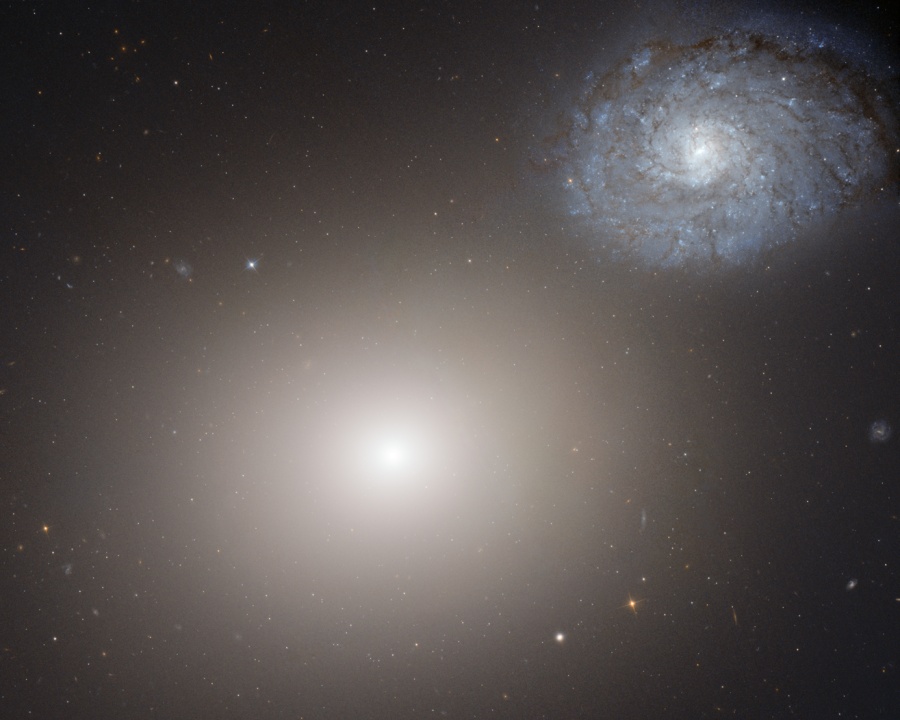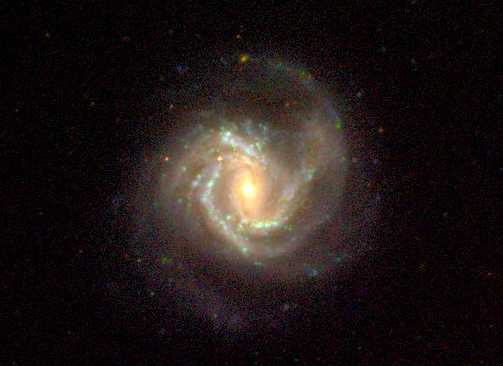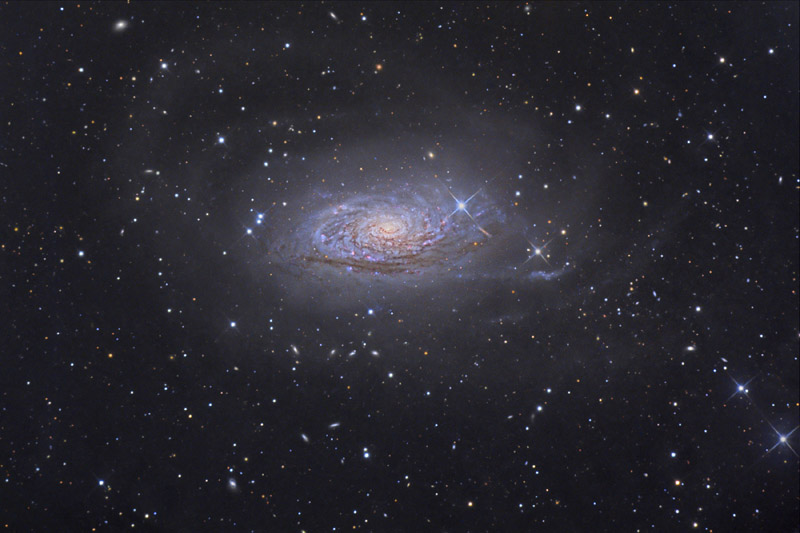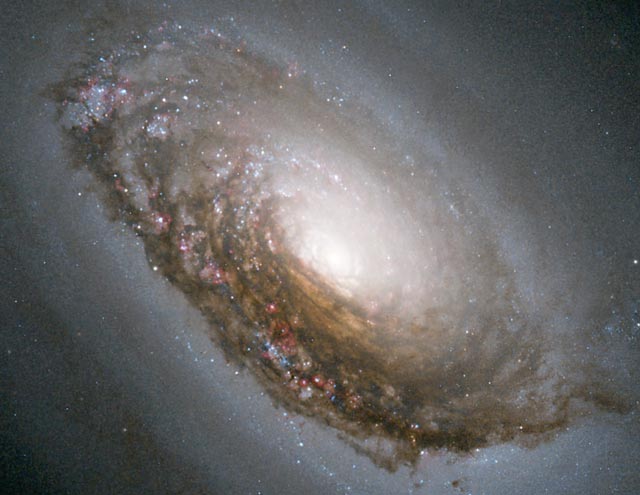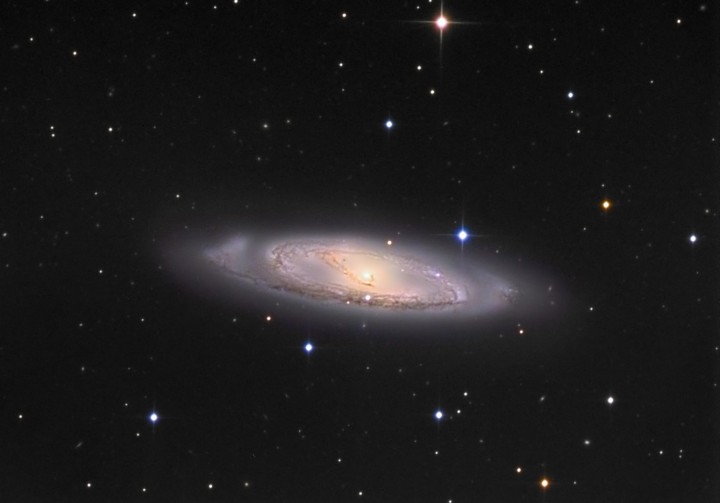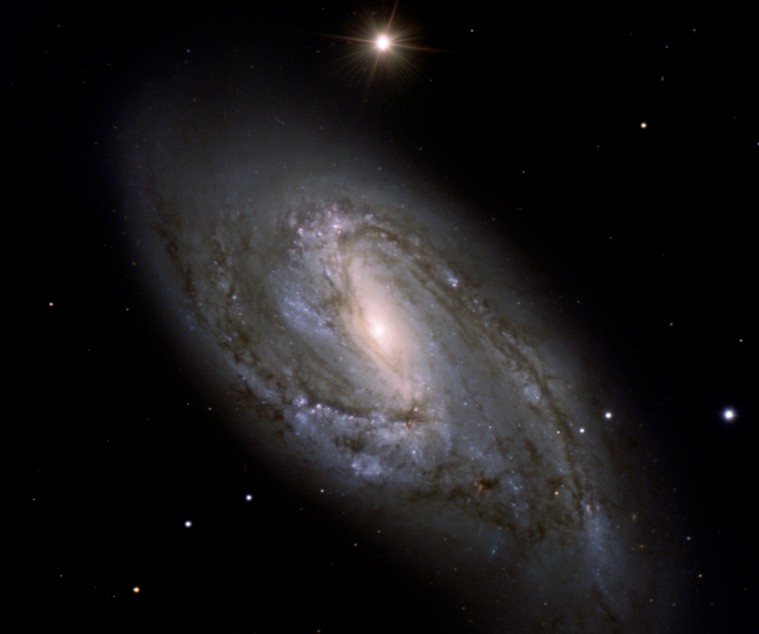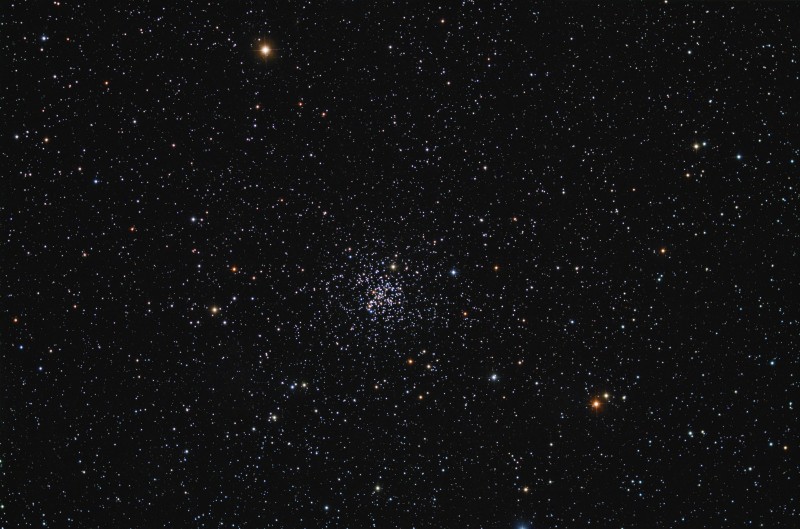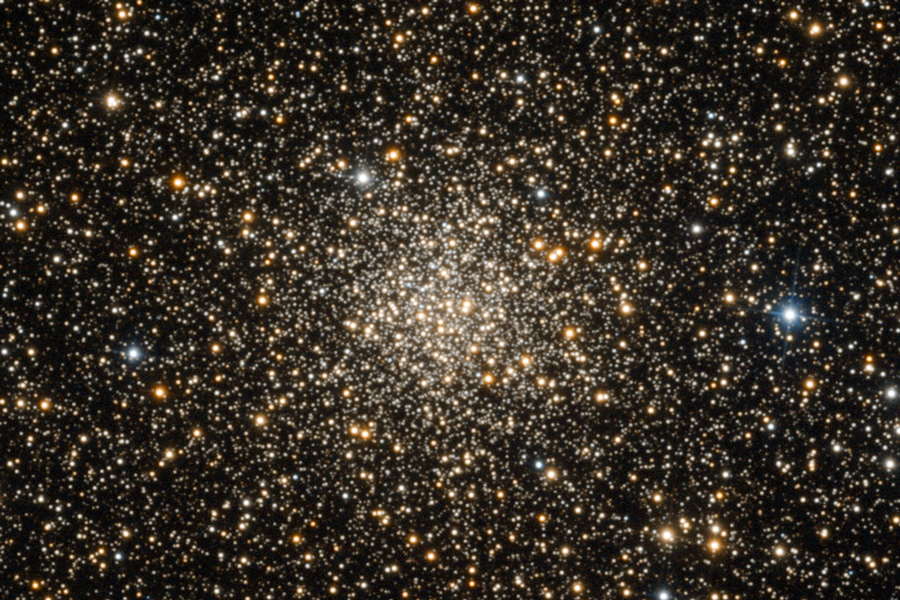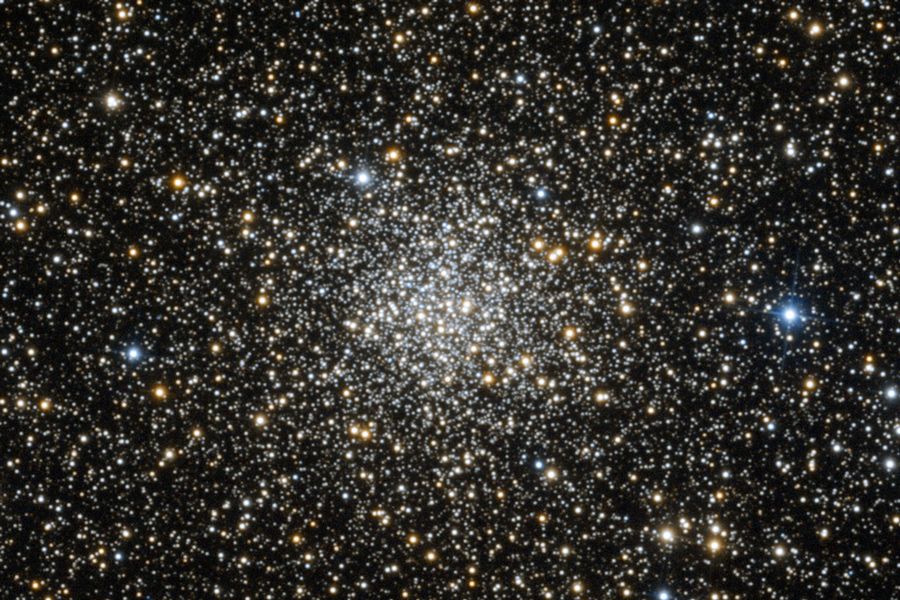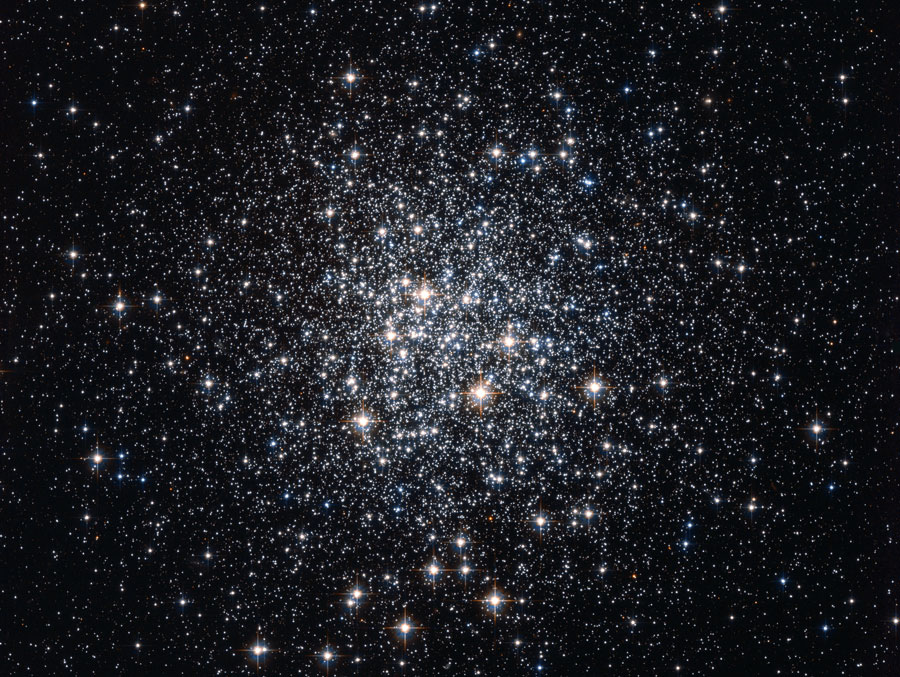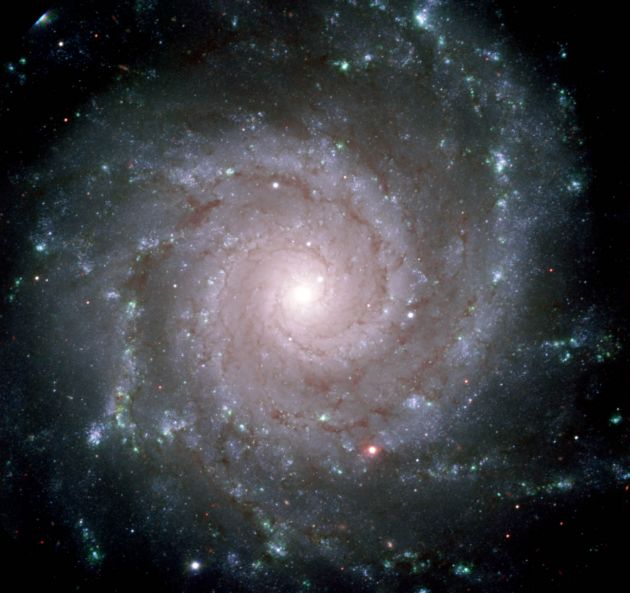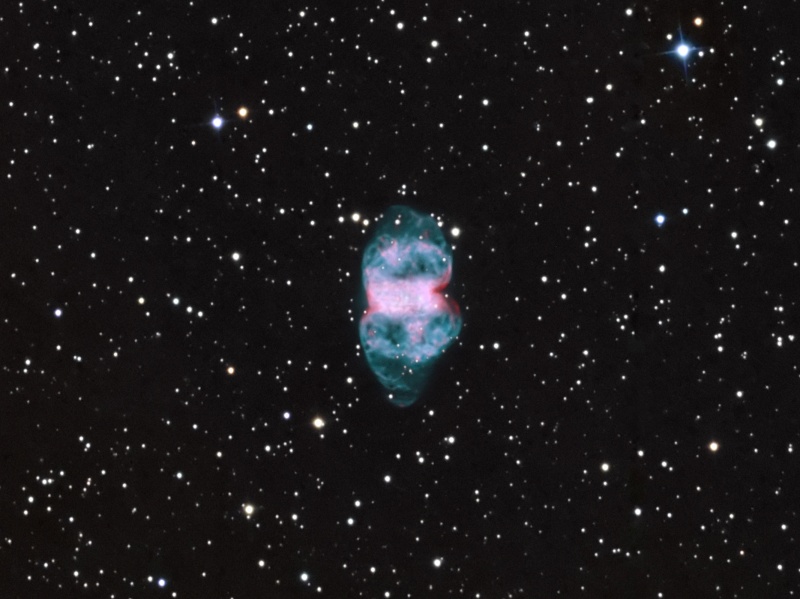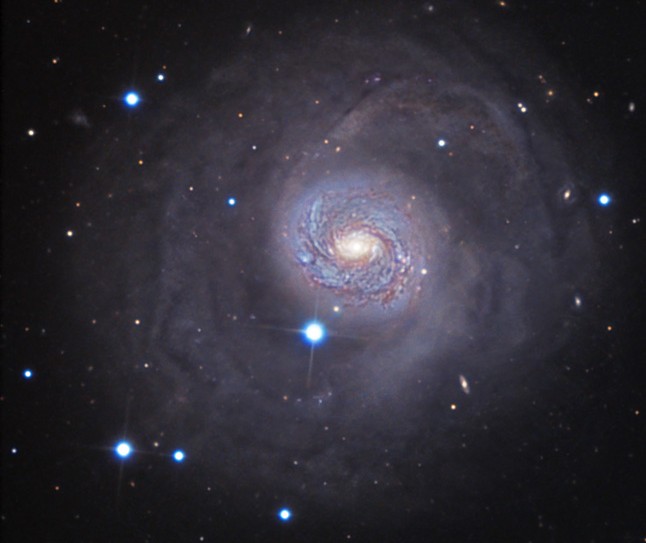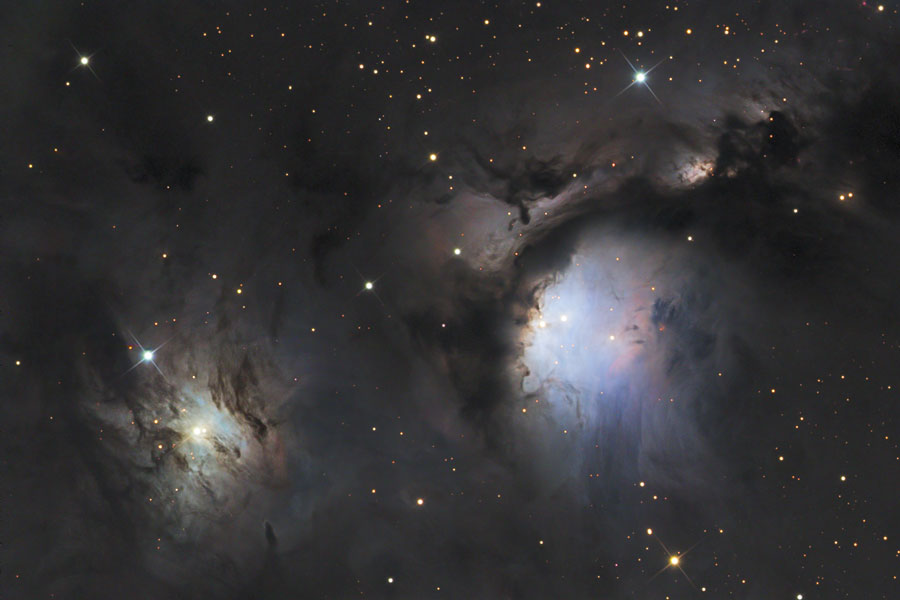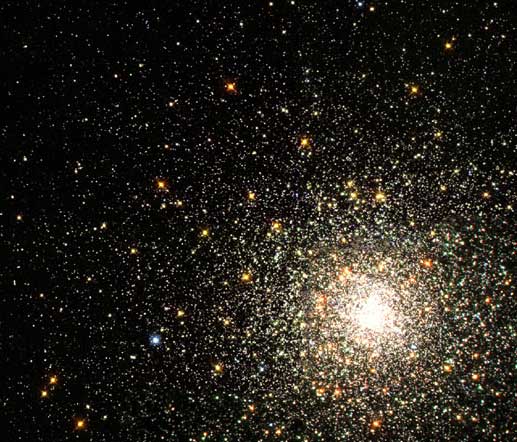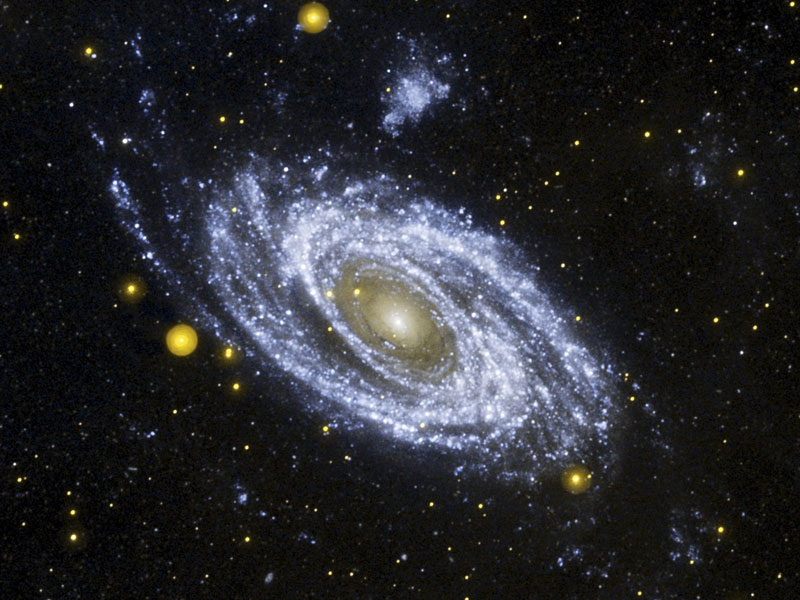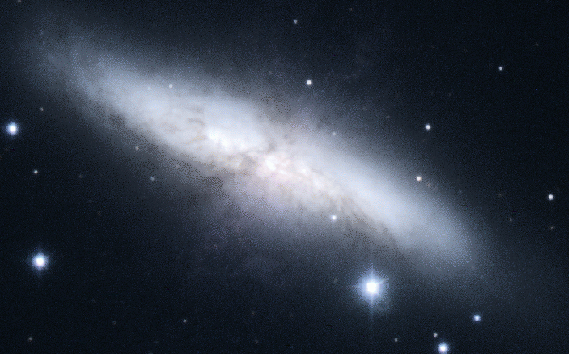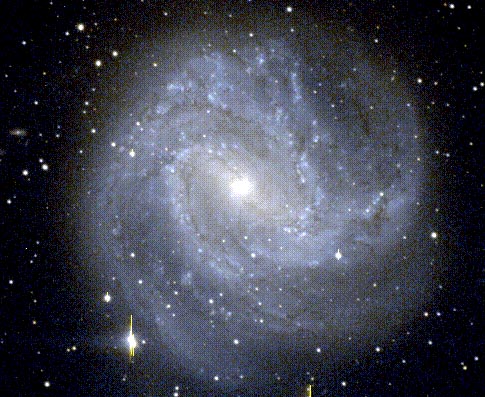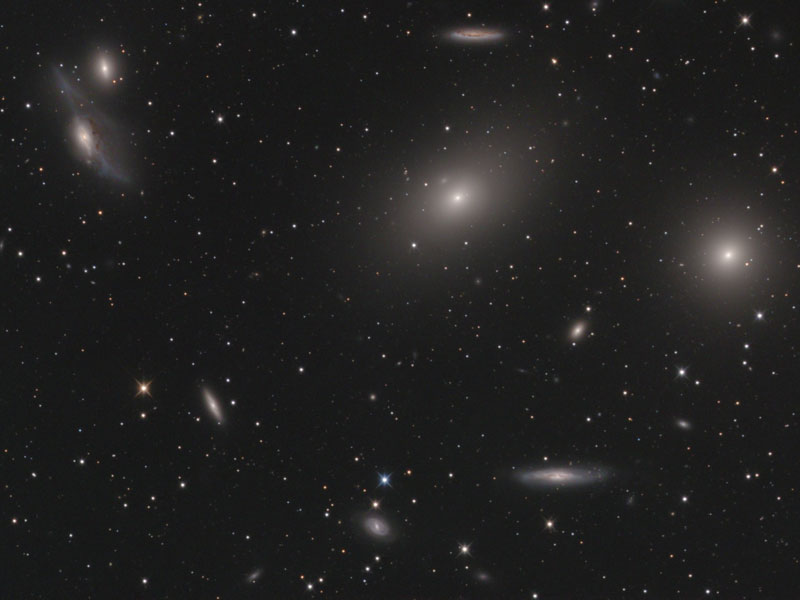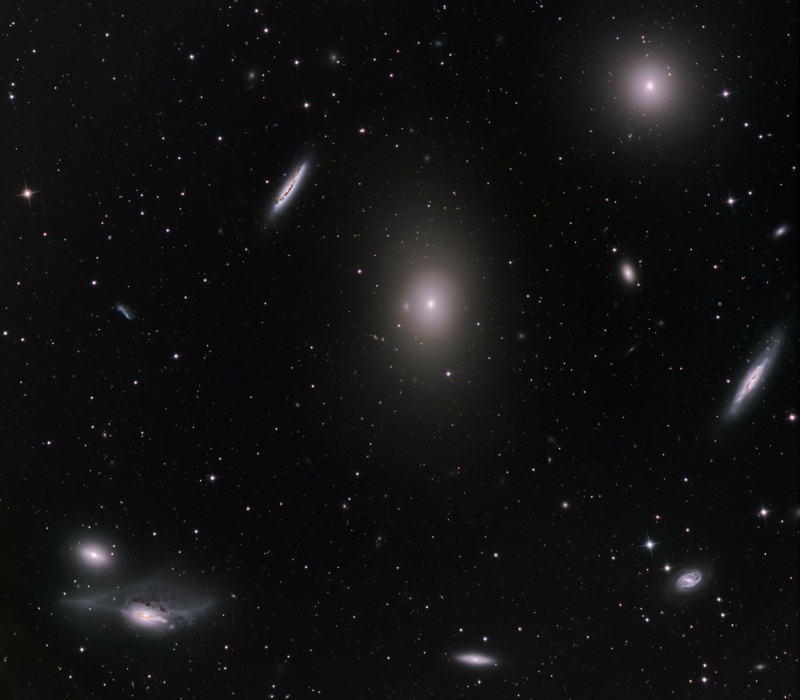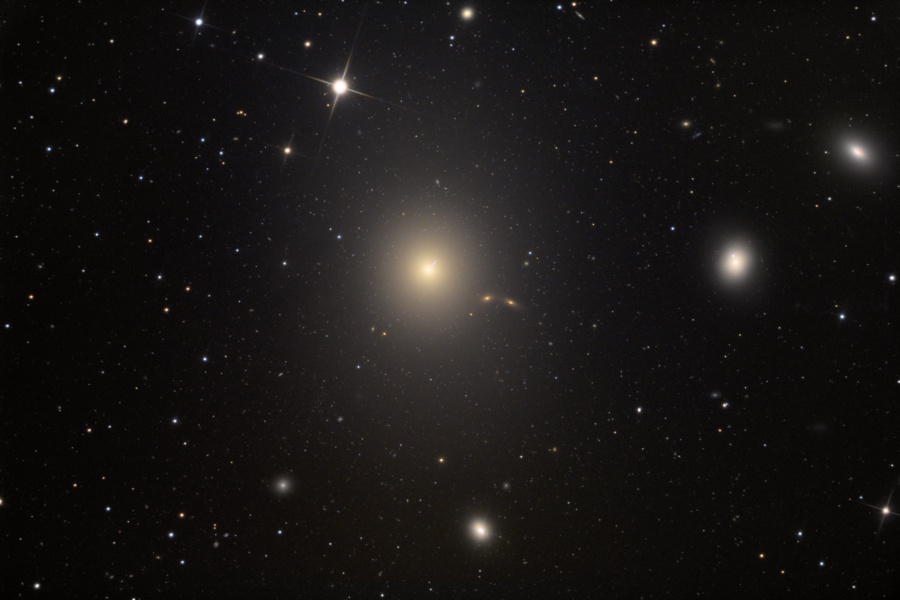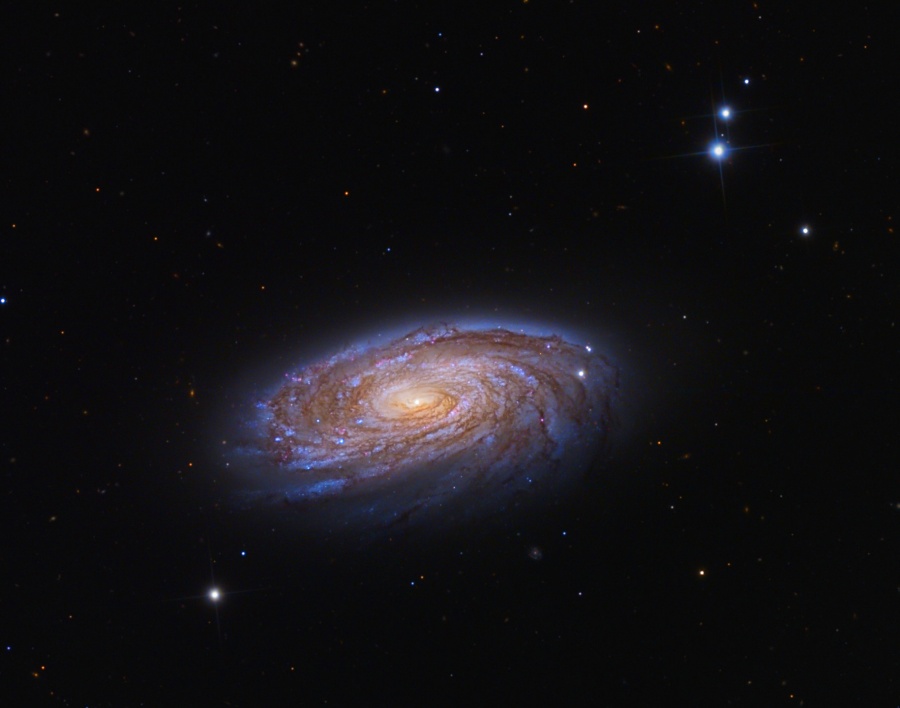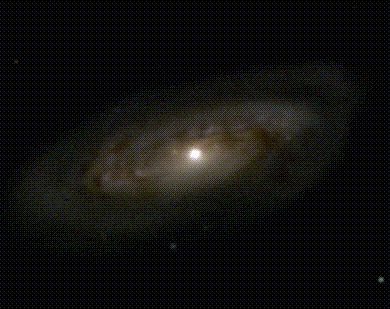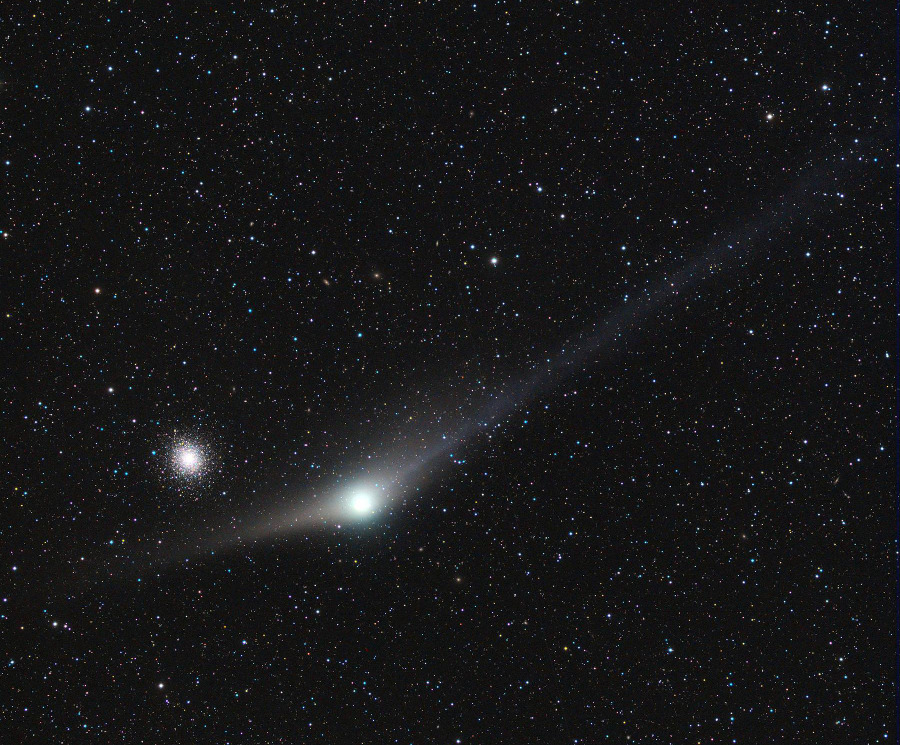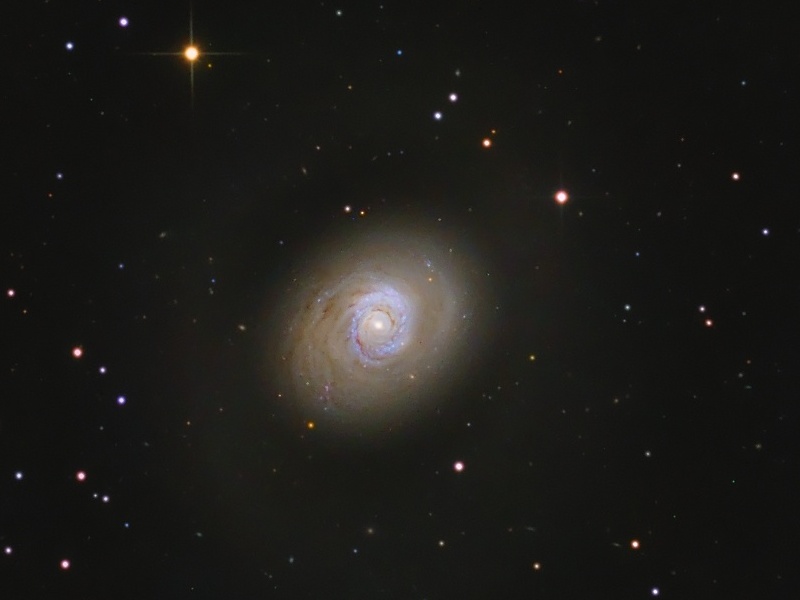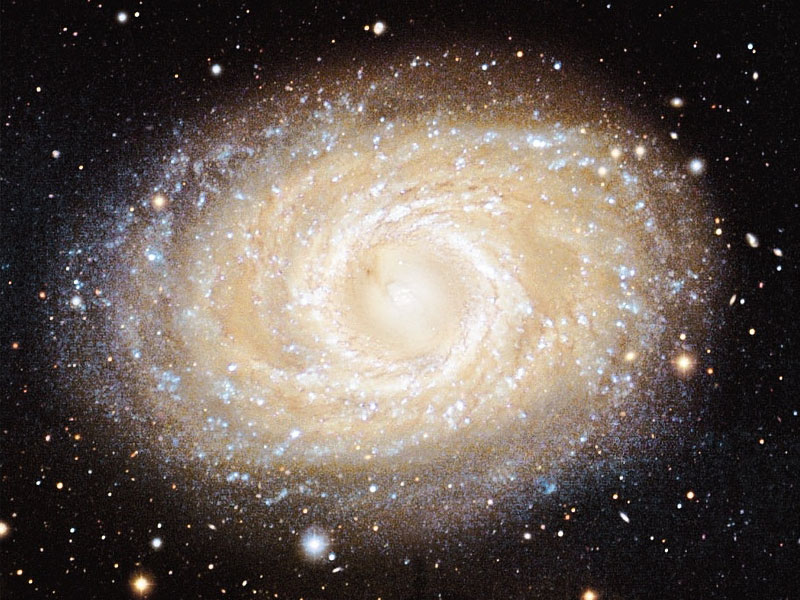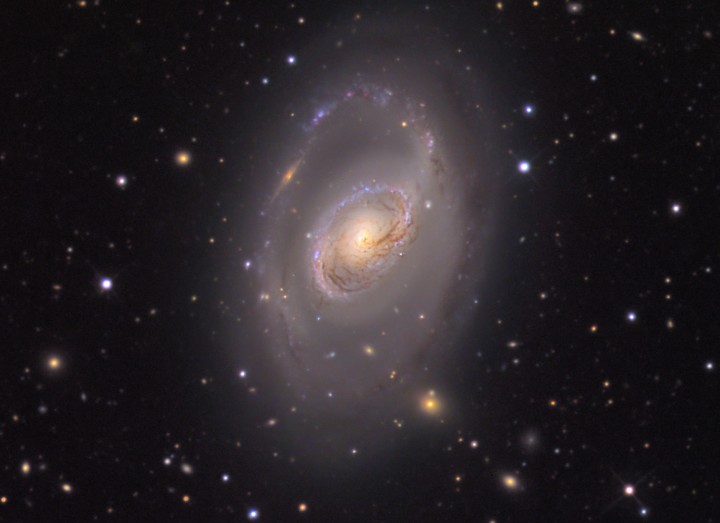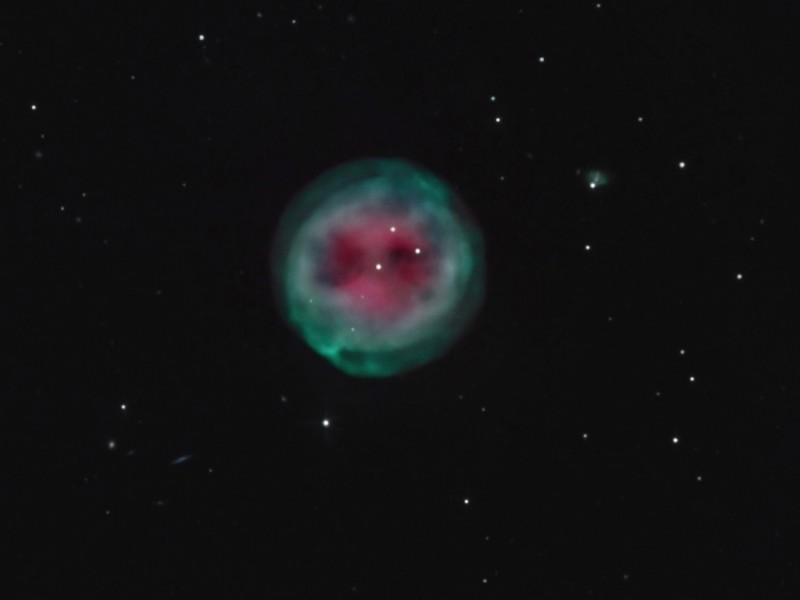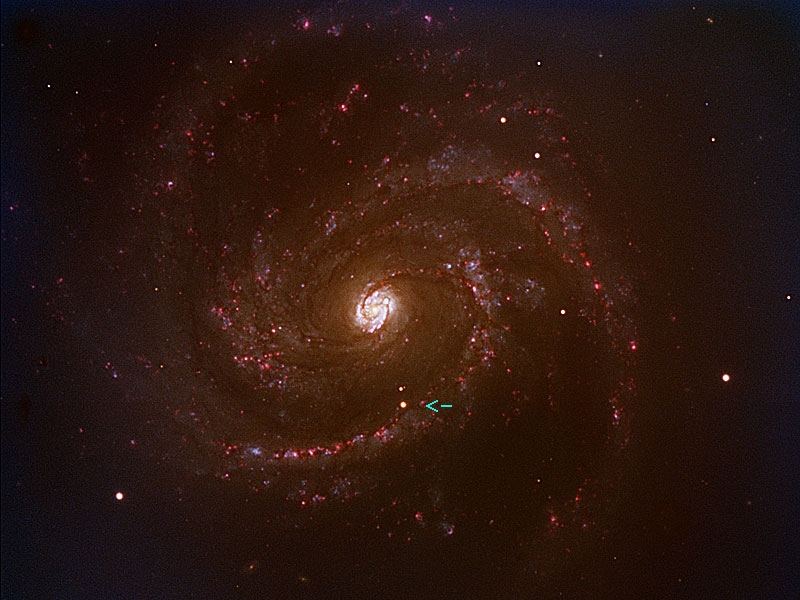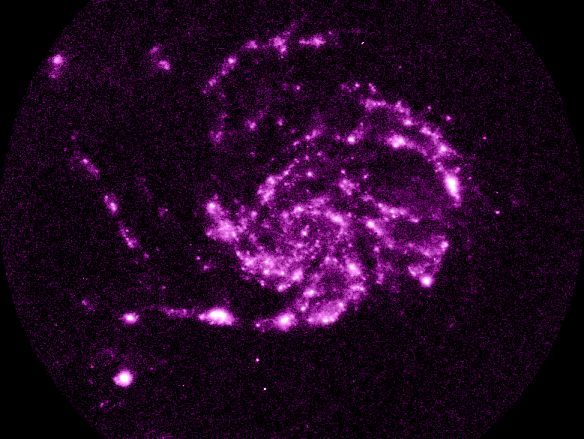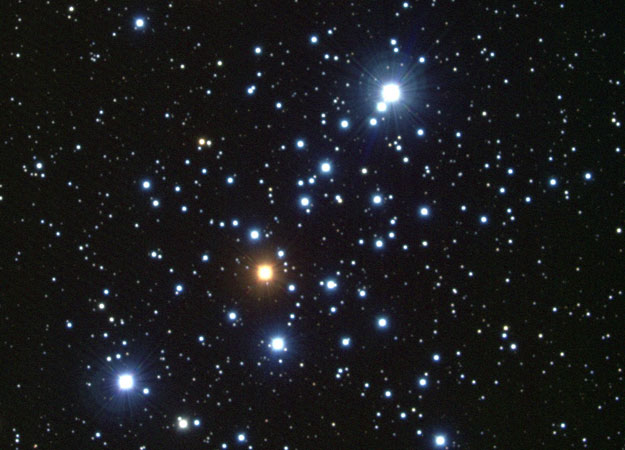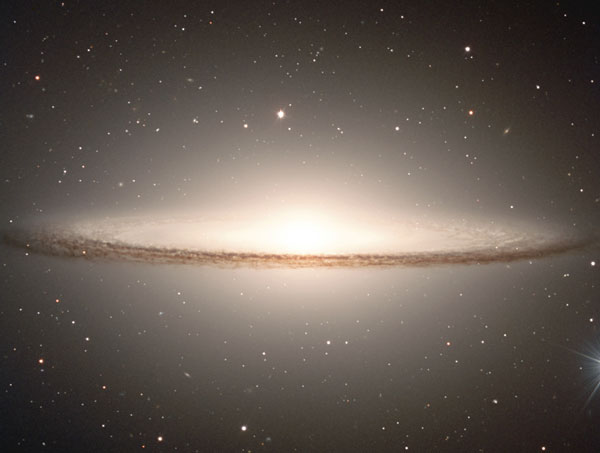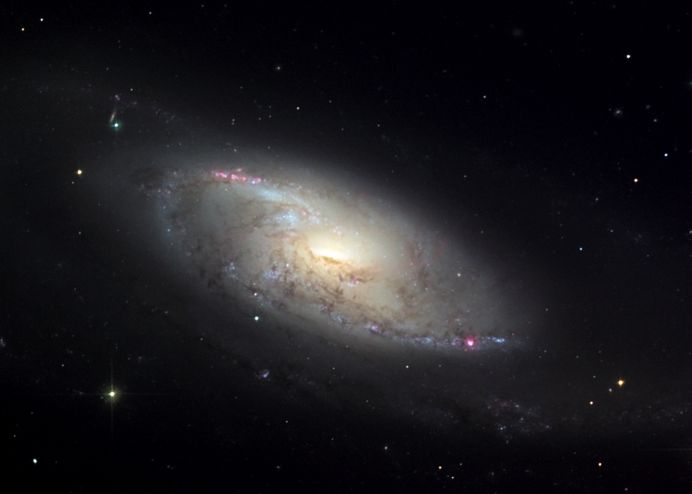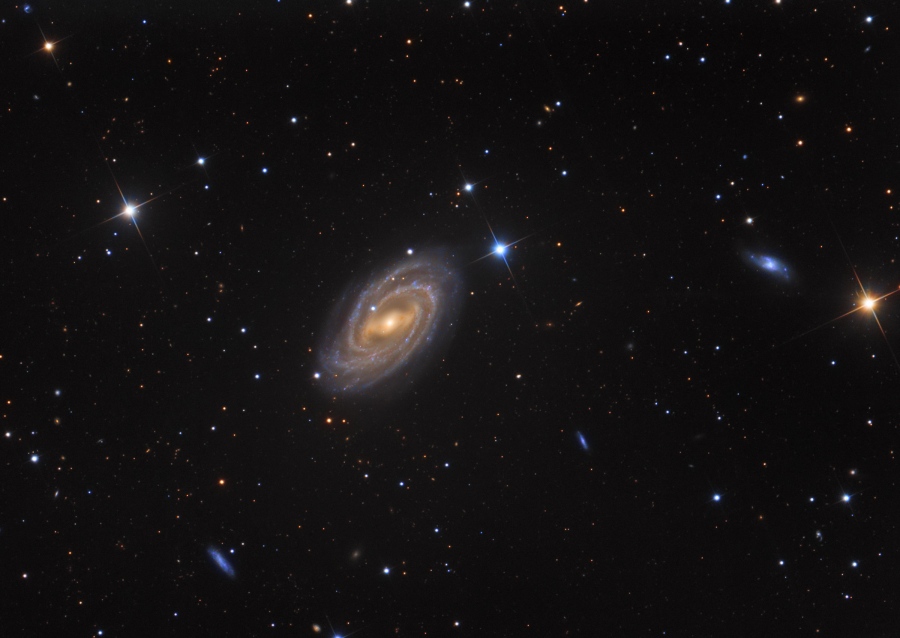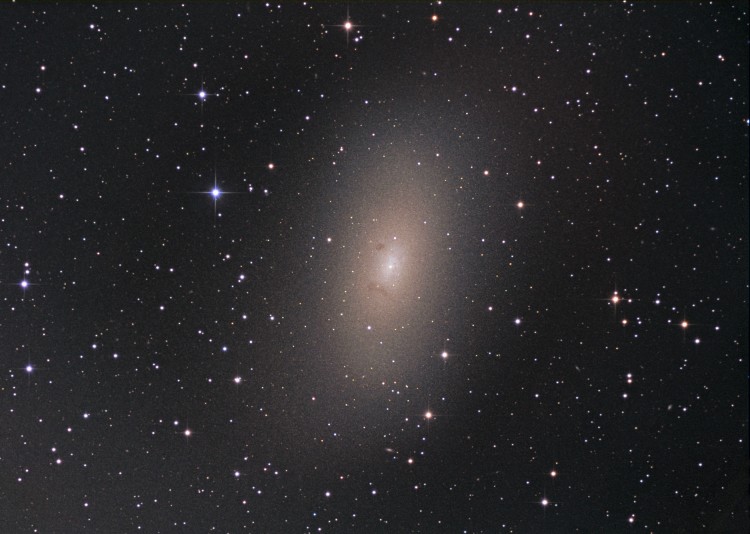What
is the collective term for Messier objects?? Regardless of whether I have chosen the right one (suggestions are welcome) for the title of this thread, here are APODs for every Messier object featured relatively on its own over the years. And here's a fun fact about Asterisk: there is a limit of 60,000 characters in a post. I learned that when I was 6,654 characters (

) over the limit, which accounts for using two posts to accommodate all the images. Enjoy!
2009 October 25
This is the mess that is left when a star explodes. The Crab Nebula, the result of a supernova seen in 1054 AD, is filled with mysterious filaments. The filaments are not only tremendously complex, but appear to have less mass than expelled in the original supernova and a higher speed than expected from a free explosion. The above image, taken by the Hubble Space Telescope, is presented in three colors chosen for scientific interest. The Crab Nebula spans about 10 light-years. In the nebula's very center lies a pulsar: a neutron star as massive as the Sun but with only the size of a small town. The Crab Pulsar rotates about 30 times each second.
2001 June 11
Beneath the south pole of our Milky Way Galaxy lies a ball of over 100,000 stars. M2, the second object on Charles Messier's eighteenth century list of bright diffuse sky objects, is known as a globular cluster, and orbits the center of our Galaxy like nearly 200 other globular clusters left over from the early days of our universe. M2, pictured above, spans over 150 light-years, lies about 50,000 light-years away, and can be seen with binoculars towards the constellation of Aquarius. Determining the distances and ages to globular clusters like M2 constrains the scale and age of our entire universe.
2007 June 9
This immense ball of half a million stars older than the Sun lies over 30,000 light-years away. Cataloged as M3 (and NGC 5272), it is one of about 150 globular star clusters that roam the halo of our Milky Way Galaxy. Even in this impressively sharp image, individual stars are difficult to distinguished in the densely packed core, but colors are apparent for the bright stars on the cluster's outskirts. M3's many cool "red" giant stars take on a yellowish cast, while hotter giants and pulsating variable stars look light blue. A closer look at the deep telescopic view also reveals a host of background galaxies. Itself about 200 light-years across, the giant star cluster is a relatively bright, easy target for binoculars in the northern constellation Canes Venatici, The Hunting Dogs, and not far from Arcturus.
2000 May 23
M4 is a globular cluster visible in dark skies about one degree west of the bright star Antares in the constellation Scorpius. M4 is perhaps the closest globular cluster at 7000 light years, meaning that we see M4 only as it was 7000 years ago, near the dawn of recorded human history. Although containing hundreds of thousands of stars and spanning over 50 light-years, M4 is one of the smallest and sparsest globular clusters known. A particularly unusual aspect for a globular cluster is M4's central bar of stars. M4, pictured above, is one of the oldest objects for which astronomers can estimate age directly. Cluster white dwarfs appear to be at least nine billion years old - so ancient they limit the youth of our entire universe.
October 19, 1995
The globular cluster M5, pictured above, contains roughly 100,000 stars. These stars formed together and are gravitationally bound. Stars orbit the center of the cluster, and the cluster orbits the center of our Galaxy. So far, about 160 globular clusters are known to exist in a roughly spherical halo around the Galactic center. Globular clusters do not appear spherically distributed as viewed from the Earth, and this fact was a key point in the determination that our Sun is not at the center of our Galaxy. Globular clusters are very old. There is a straightforward method of determining their age, and this provides a very interesting lower limit on the age of our universe of about 14 billion years.
January 6, 1999
To some, the outline of the open cluster of stars M6 resembles a butterfly. M6, also known as NGC 6405, spans about 20 light-years and lies about 2,000 light years distant. M6 can best be seen in a dark sky with binoculars towards the constellation of Scorpius, coving about as much of the sky as the full moon. Like other open clusters, M6 is composed predominantly of young blue stars, although the brightest star is nearly orange. M6 is estimated to be about 100 million years old. Determining the distance to clusters like M6 helps astronomers calibrate the distance scale of the universe.
2009 November 8
M7 is one of the most prominent open clusters of stars on the sky. The cluster, dominated by bright blue stars, can be seen with the naked eye in a dark sky in the tail of the constellation of the Scorpion (Scorpius). M7 contains about 100 stars in total, is about 200 million years old, spans 25 light-years across, and lies about 1000 light-years away. The above deep exposure was taken last month over several nights from Yalbraith, NSW, Australia. The M7 star cluster has been known since ancient times, being noted by Ptolemy in the year 130 AD. Also visible are a dark dust cloud and literally millions of unrelated stars towards the Galactic center.
2009 July 22
Stars are battling gas and dust in the Lagoon Nebula but the photographers are winning. Also known as M8, this photogenic nebula is visible even without binoculars towards the constellation of Sagittarius. The energetic processes of star formation create not only the colors but the chaos. The red-glowing gas, shown on the above left in re-assigned colors, results from high-energy starlight striking interstellar hydrogen gas. The Trifid nebula is visible on the far right. The dark dust filaments that lace M8 were created in the atmospheres of cool giant stars and in the debris from supernovae explosions. The light from M8 we see today left about 5,000 years ago. Light takes about 50 years to cross this section of M8.
2012 March 23
Renown 18th century astronomer Charles Messier
described this 9th entry in his famous astronomical catalog as "Nebula, without star, in the right leg of Ophiuchus ...". But
Messier 9 (M9) does have stars, known to modern astronomers as a
globular cluster of over 300,000 stars within a diameter of about 90 light-years.
It lies some 25,000 light-years distant, near the central bulge of our Milky Way galaxy.
This Hubble Space Telescope close-up resolves the dense swarm of stars across the cluster's central 25 light-years. At least twice the age of the Sun and deficient in heavy elements, the cluster stars have colors corresponding to
their temperatures, redder stars are cooler, bluer stars are hotter. Many of the cluster's cool
red giant stars show a yellowish tint in the sharp Hubble view.
2001 June 30
Stars like the Sun use hydrogen for fuel, "burning" hydrogen into helium at their cores through nuclear fusion. But what happens when that hydrogen runs out? For a while, hydrogen burns in a shell surrounding the stellar core and the star expands to become a red giant. The bright reddish-orange stars in this beautiful two-color composite picture of the old globular star cluster M10 are examples of this phase of stellar evolution. Yet the bright blue stars apparent in M10 have evolved beyond the simple, hydrogen shell burning stage. These stars have become "horizontal branch" giants with core temperatures hot enough to burn helium into carbon. In this image, only the barely visible, faint, gray-looking stars are likely to still be burning hydrogen at their cores.
2003 January 22
Many stars like our Sun were formed in open clusters. The above pictured open cluster, M11, contains thousands of stars and is just over five thousand light years distant. The stars in this cluster all formed together about 250 million years ago. The bright young stars in M11 appear blue. Open clusters, also called galactic clusters, contain fewer and younger stars than globular clusters. Also unlike globular clusters, open clusters are generally confined to the plane of our Galaxy. M11 is visible with binoculars towards the constellation of Scutum.
2010 May 27
In 1716, English astronomer
Edmond Halley noted, "This is but a little Patch, but it shews it self to the naked Eye, when the Sky is serene and the Moon absent."
Of course, M13 is now modestly recognized as the Great Globular Cluster in Hercules, one of the brightest
globular star clusters in the northern sky. Telescopic views reveal the spectacular cluster's hundreds of thousands of stars. At a distance of 25,000 light-years, the cluster stars
crowd into a region 150 light-years in diameter, but
approaching the cluster core upwards of 100 stars could be contained in a cube just 3 light-years on a side. For comparison, the
closest star to the Sun is over 4 light-years away. Along with the cluster's dense core, the outer reaches of M13 are highlighted in this sharp
color image. The cluster's
evolved red and blue
giant stars show up in yellowish and blue tints.
November 12, 1996
Comet Hale-Bopp continues its slow trek across the night sky, and can now be seen superposed near the bright globular cluster M14. Will Comet Hale-Bopp become as bright in early 1997 as Comet Hyakutake did in early 1996? It is still too early to tell. Currently Hale-Bopp is curiously holding at about 5th magnitude - just barely bright enough to see without binoculars from a dark location. Because of the size of coma, some speculate that the nucleus of Hale-Bopp is unusually large. The actual nucleus is obscured, however, and recent speculation includes that the nucleus is comparable in size to Comet Halley - about 10-15 km across.
2001 September 20
Side by side, two x-ray stars greeted astronomers in this false-color Chandra Observatory x-ray image of a region near the core of globular star cluster M15. The greeting was a pleasant surprise, as all previous x-ray images of the cluster showed only one such source where Chandra's sharper x-ray vision now reveals two. These x-ray sources are modeled as neutron star binary systems. Each is a city-sized neutron star in close orbit with a normal stellar companion. X-rays are generated as matter from the normal star falls onto the compact neutron star. This break through explains why observations of the previously recognized lone neutron star binary system in M15 were difficult to reconcile with any single model. It also suggests that other globular star clusters which roam the halo of our Milky Way galaxy and seem to contain only one such neutron star x-ray source may in fact contain more. An optical Hubble Space Telescope image of the dense M15 cluster is inset at the upper right.
2002 January 3
The Hubble Space Telescope's 1995 image of pillars of dust and gas, light-years long, within the Eagle Nebula (M16) was sensational. The three prominent pillars in that close-up visible light picture also appear below center in this wide-field mosaic along with massive, bright, young stars of cluster NGC 6611 (upper right), whose winds and radiation are shaping the dusty pillars. Made in near infrared light with the European Southern Observatory's 8.2-meter Antu telescope, this wide-field image makes the pillars seem more transparent, as the longer wavelengths partially penetrate the obscuring dust. While the Hubble image showed the pillars' startling surface details - over 70 opaque, finger-shaped lumps of material dubbed evaporating gaseous globules or EGGs, the near infrared view has allowed astronomers to peer inside. Comparing the two views reveals that nearly a dozen of the EGGs do indeed have stars embedded near their tips. More stars within EGGs may be detected if longer wavelength observations of the region are made. But which came first, the stars or the EGGs?
2007 August 10
Sculpted by stellar winds and radiation, the star factory known as Messier 17 lies some 5,500 light-years away in the nebula-rich constellation Sagittarius. At that distance, this 30 arcminute field of view spans almost 50 light-years. Stellar winds and energetic light from hot, massive stars formed from M17's stock of cosmic gas and dust have slowly carved away at the remaining interstellar material producing the cavernous appearance and undulating shapes. Colors in the gorgeous image were picked to emphasize light emitted by specific elements in the nebula excited by the energetic starlight. Red indicates emission from sulfur, green from hydrogen, and blue from oxygen. M17 is also known as the Omega Nebula or the Swan Nebula.
2000 July 19
M19 appears to be a typical globular cluster of stars - except for its shape. If one looks closely at the cluster, pictured above, it appears to be longer (top to bottom) than it is wide. In fact, M19 is the most aspherical globular cluster of the approximately 160 known orbiting the center of our Milky Way Galaxy. M19 lies about 27,000 light-years away, measures about 60 light-years across, and is home to over 100,000 stars. The cluster can be found with binoculars towards the constellation of Ophiuchus. The reason for the clusters' odd shape remains unknown, but might be related to the clusters' close (5000 light-year) proximity to the Galactic Center. Alternatively, the shape might be an illusion created by an unusual lane of dark absorbing dust on one side of the cluster.
2007 July 7
The Trifid Nebula, aka Messier 20, is easy to find with a small telescope, a well known stop in the nebula rich constellation Sagittarius. But where visible light pictures show the nebula divided into three parts by dark, obscuring dust lanes, this penetrating infrared image reveals filaments of glowing dust clouds and newborn stars. The spectacular false-color view is courtesy of the Spitzer Space Telescope. Astronomers have used the Spitzer infrared image data to count newborn and embryonic stars which otherwise can lie hidden in the natal dust and gas clouds of this intriguing stellar nursery. As seen here, the Trifid is about 30 light-years across and lies only 5,500 light-years away.
2014 August 28
The beautiful Trifid Nebula, also known as Messier 20, is easy
to find with a small telescope in the nebula rich constellation Sagittarius. About 5,000 light-years away, the colorful study in
cosmic contrasts shares
this well-composed, nearly 1 degree wide field with open star cluster
Messier 21 (top right). Trisected by dust lanes the Trifid itself is about 40 light-years across and a mere 300,000 years old. That makes it one of the
youngest star forming regions in our sky, with newborn and embryonic stars embedded in its
natal dust and gas clouds. Estimates of the distance to open star cluster M21 are similar to M20's, but though they share this gorgeous telescopic skyscape there is no apparent connection between the two. In fact, M21's stars are much older, about 8 million
years old.
2005 June 27
The globular cluster M22, pictured above, contains over 100,000 stars. These stars formed together and are gravitationally bound. Stars orbit the center of the cluster, and the cluster orbits the center of our Galaxy. So far, about 140 globular clusters are known to exist in a roughly spherical halo around the Galactic center. Globular clusters do not appear spherically distributed as viewed from the Earth, and this fact was a key point in the determination that our Sun is not at the center of our Galaxy. Globular clusters are very old. There is a straightforward method of determining their age, and this nearly matches the 13.7 billion-year age of our entire universe.
2004 September 21
Many vast star fields in the plane of our Milky Way Galaxy are rich in clouds of dust, and gas. First and foremost, visible in the above picture are millions of stars, many of which are similar to our Sun. Next huge filaments of dark interstellar dust run across the image and block the light from millions of more stars yet further across our Galaxy. The bright red region on the left is part of the Omega Nebula, an emission nebula of mostly hot hydrogen gas also known as M17. A small bright grouping of stars near the image center is the open cluster M18, while the long bright streak of stars just right of center is M24. On the far right of the image is the picturesque red emission nebula IC 1283 flanked by two blue reflection nebulas NGC 6589 and NGC 6590. These objects are visible with a small telescope toward the constellation of Sagittarius.
2009 August 31
Many stars like our Sun were formed in open clusters. The above pictured open cluster, M25, contains thousands of stars and is about two thousand light years distant. The stars in this cluster all formed together about 90 million years ago. The bright young stars in M25 appear blue. Open clusters, also called galactic clusters, contain fewer and younger stars than globular clusters. Also unlike globular clusters, open clusters are generally confined to the plane of our Galaxy. M25 is visible with binoculars towards the constellation of the Archer (Sagittarius).
2003 July 25
In 1764, French astronomer Charles Messier sighted this gorgeous cosmic cloud which he described as an oval nebula without stars. Cataloged as M27, it is now popularly known as the Dumbbell Nebula, not for its substandard academic performance but for the elongated shape, like a bar with weights on each end, which first caught Messier's eye. This deep image of the bright planetary nebula does reveal the Dumbell's central star though, and an array of foreground and background stars toward the sly constellation Vulpecula. The picture is a composite that includes 8 hours of exposure through a filter designed to record only the light of hydrogen atoms, tracing the intricate details of the nebula's faint outer halo which spans light-years. Thought to be an example of the fate awaiting our own Sun 5 billion years hence, the Dumbbell Nebula is about 1,200 light-years away.
2010 January 9
The most distant object easily visible to the eye is
M31, the great
Andromeda Galaxy some two and a half million light-years away. But without a telescope, even this immense spiral galaxy - spanning
over 200,000 light years - appears as a faint, nebulous cloud in the
constellation Andromeda. In contrast, details of a bright yellow nucleus and dark winding dust lanes, are revealed in this
digital telescopic image. Narrow band image data, recording emission from hydrogen atoms, shows off the
reddish star-forming regions dotting gorgeous blue spiral arms and young star clusters While even casual
skygazers are now inspired by the knowledge that there are
many distant galaxies like M31, astronomers
seriously debated this fundamental concept in the 20th century. Were these "spiral nebulae" simply outlying components of our own Milky Way Galaxy or were they instead "island universes" -- distant systems of stars comparable to the Milky Way itself? This question was central to the famous
Shapley-Curtis debate of 1920, which was later resolved by
observations of M31 in favor of Andromeda,
island universe.
November 3, 1999
Elliptical galaxies are known for their old, red stars. But is this old elliptical up to new tricks? In recent years, the centers of elliptical galaxies have been found to emit unexpectedly high amounts of blue and ultraviolet light. Most blue light from spiral galaxies originates from massive young hot stars, in contrast to the red light from the old cool stars thought to compose ellipticals. In the above recently released, false-color photograph by the Hubble Space Telescope, the center of nearby dwarf elliptical M32 has actually been resolved and does indeed show thousands of bright blue stars. The answer is probably that these blue stars are also old and glow blue, reaching relatively high temperatures by the advanced process of fusing helium, rather than hydrogen, in their cores. M32 appears in many pictures as the companion galaxy to the massive Andromeda Galaxy (M31).
2010 December 3
The small, northern constellation
Triangulum harbors this magnificent face-on spiral galaxy, M33. Its popular names include the Pinwheel Galaxy or just the
Triangulum Galaxy. M33 is over 50,000 light-years in diameter, third largest in the
Local Group of galaxies after the Andromeda Galaxy (M31), and our own Milky Way. About 3 million light-years from the Milky Way, M33 is itself thought to be a satellite of the
Andromeda Galaxy and
astronomers in these two galaxies would likely have spectacular views of each other's grand spiral star systems. As for the view from planet Earth,
this sharp, detailed image nicely shows off M33's blue star clusters and pinkish
star forming regions that trace the galaxy's loosely wound spiral arms. In fact, the
cavernous NGC 604 is the brightest star forming region, seen here at about the 4 o'clock position from the galaxy center. Like M31, M33's population of well-measured variable stars have helped make this nearby spiral a
cosmic yardstick for
establishing the distance
scale of the Universe.
2010 February 11
This pretty[/url] open cluster of stars,
M34, is about the size of the Full Moon on the sky. Easy to appreciate in small telescopes, it lies some 1,800 light-years away in the constellation
Perseus. At that distance, M34 physically spans about 15 light-years. Formed at the same time from the same cloud of dust and gas, all the
stars of M34 are about 200 million years young. But like
any open star cluster orbiting in the
plane of our galaxy, M34 will eventually disperse as it experiences gravitational tides and encounters with the
Milky Way's interstellar clouds and other stars. Over four billion years ago, our own Sun was likely formed in a similar
open star cluster.
2006 April 19
This evening's skyscape includes a view similar to this one, recorded in western skies on April 16 - an orange-hued planet Mars wandering near rich open star cluster M35. Also notable is fainter star cluster NGC 2158, just above and left of M35. The grouping appears near the "foot stars" of the constellation Gemini, but of course Mars is in the foreground, just over 14 light-minutes from planet Earth. The hundreds of stars in cluster M35 are more like 3,000 light-years distant. NGC 2158 is farther still, about 16,000 light-years away and is much more compact than M35. The color image shows off the contrast between hot blue stars and cooler yellowish stars within the confines of M35. But the stars of NGC 2158 are much older, and that cluster's light is definitely dominated by the orange glow of cool giant stars, making an interesting visual comparison to ruddy-colored Mars.
2003 January 7
Open cluster M38 can be seen with binoculars toward the constellation of Auriga. M38 is considered an intermediately rich open cluster of stars, each of which is about 200 million years old. Located in the disk of our Milky Way galaxy, M38 is still young enough to house many bright blue stars, although it's brightest star is a yellow giant shining 900 times brighter than our Sun. The cluster spans roughly 25 light-years and lies about 4000 light-years away. M38, pictured above, is found only about 2.5 degrees northwest of open cluster M36. Loosely bound by gravity, open clusters spread out over time as they orbit the galactic center and their member stars slowly escape.
2004 March 31
Lying just at the limit of human perception is a picturesque starfield containing one of the larger open clusters on the northern sky. Spanning an angle larger than the Moon, M39's relatively few stars lie only about 800 light years distant toward the constellation of Cygnus. The above picture of M39 is a mosaic of 33 images taken by the WIYN telescope on Kitt Peak in Arizona, USA. The stars in M39 are all about 300 million years old, much younger than the 5000 million years of our Sun. Open clusters, also called galactic clusters, contain fewer and younger stars than globular clusters. Also unlike globular clusters, open clusters are generally confined to the plane of our Galaxy.
2009 August 26
The Great Nebula in Orion, also known as M42, is one of the most famous nebulae in the sky. The star forming region's glowing gas clouds and hot young stars are near the center of this colorful deep sky image that includes the smaller nebula M43 and dusty, bluish reflection nebulae NGC 1977 and friends on the left. Located at the edge of an otherwise invisible giant molecular cloud complex, these eye-catching nebulae represent only a small fraction of this galactic neighborhood's wealth of interstellar material. Captured with very modest equipment, the gorgeous skyscape was awarded Best in Show at the 2009 Starfest International Salon of Astrophotography. Judges commented that the detail and shading were exquisite in this version of a classic astronomical image. The field spans nearly 3 degrees or about 75 light-years at the Orion Nebula's estimated distance of 1,500 light-years.
2002 September 25
Rising before the Sun on September 4, Jupiter and an old cresent Moon gathered in the dim constellation of Cancer. Watching from a hillside near Austin, Texas, planet Earth, astrophotographer Russell Croman recorded this view of their passing as clouds gracefully dimmed the brilliant moonlight. Earthshine illuminates the lunar night side and on close inspection, bright Jupiter at the lower right appears tightly flanked by its own four large Galilean moons. Next to Jupiter lies a loose swarm of stars just below the clouds. The stars are the brighter members of the nearby star cluster M44, popularly known as the Beehive cluster. Croman's remarkable digital image has been processed only slightly to improve the visibility of the earthshine region and Jupiter's moons.
2001 March 22
Brilliant Venus falls out of the evening sky as March ends, but Jupiter and Saturn remain well up above the western horizon. Jupiter blazes forth above and to the left of a slightly fainter Saturn in this telephoto picture taken on January 19th. Near the top lies the lovely Pleiades star cluster with suggestions of its characteristic blue reflection nebulae. These planets and the Pleiades have a similar, easily recognizable orientation in the Spring night sky. Also known as M45, the 45th object in French astronomer Charles Messier's famous catalog, the Pleiades will likely soon be checked off many stargazers' tally lists. For northern hemisphere observers this weekend offers a prime opportunity to complete a Messier Marathon -- the viewing of all 110 Messier catalog objects in one glorious dusk to dawn observing run. This weekend it will also be possible to complete an all-planet marathon, observing all the solar system's planets in a single night. And if you still need something to look at, the International Space Station could also be visible arcing through the skies depending on your location, but Mir will not.
2006 September 10
Many stars form in clusters. Galactic or open star clusters are relatively young swarms of bright stars born together near the plane of our Milky Way Galaxy. Separated by about a degree on the sky, two nice examples are M46 (upper left) 5,400 light-years in the distance and M47 (lower right) only 1,600 light-years away toward the nautical constellation Puppis. Around 300 million years young M46 contains a few hundred stars in a region about 30 light-years across. Aged 80 million years, M47 is a smaller but looser cluster of about 50 stars spanning 10 light-years. But this portrait of stellar youth also contains an ancient interloper. The small, colorful patch of glowing gas in M46 is actually the planetary nebula NGC 2438 - the final phase in the life of a sun-like star billions of years old. NGC 2438 is estimated to be only 3,000 light-years distant and likely represents a foreground object, only by chance appearing along our line of sight to youthful M46.
January 28, 1997
Many stars form in clusters. Two types of star clusters are visible in our Milky Way Galaxy: open clusters and globular clusters. Open clusters like M50, shown above, typically contain hundreds of stars, many of which are bright, young, and blue. In fact, most of the bright blue stars in the above picture belong to M50, but most of the dimmer, red stars do not. M50 lies about 3000 light-years from Earth and is about 20 light years across. Open clusters tend to have irregular shapes and are mostly found in the plane of our Galaxy.
2011 January 26
Credit: Infrared: NASA, ESA, M. Regan & B. Whitmore (STScI), & R. Chandar (U. Toledo);
Optical: NASA, ESA, S. Beckwith (STScI), & the Hubble Heritage Team (STScI/AURA) How do spiral galaxies form stars? To help find out, the
Hubble Space Telescope imaged the nearby photogenic spiral
M51 in
infrared light to highlight the dust that traces the dense gas that best forms stars. To further isolate the
dust, much of the optical light from stars has also been
digitally removed. The
resulting unique image shows swirling and intricate patterns on the longest scales, while numerous bright clumps of previously hidden
open star clusters appear on the smaller scales. To see the
detailed optical light image for comparison, run your cursor over the above image. Anyone with a good pair of
binoculars can see the
Whirlpool toward the constellation of the
Hunting Dogs (
Canes Venatici). M51 lies about 30 million light years away, while the above imaged area spans about 15,000
light years from top to bottom. Astronomers speculate that M51's
spiral structure is primarily due to its gravitational interaction with
a neighboring smaller galaxy.
